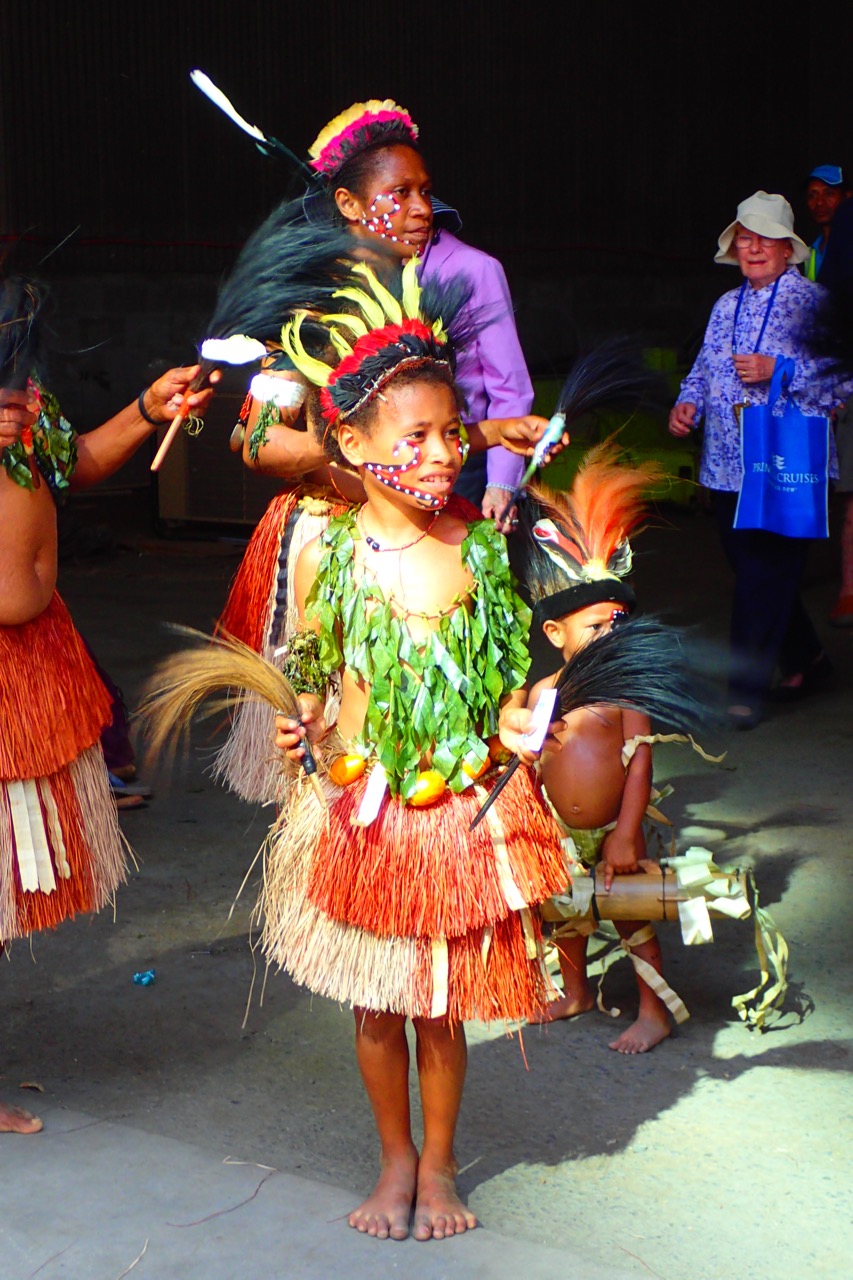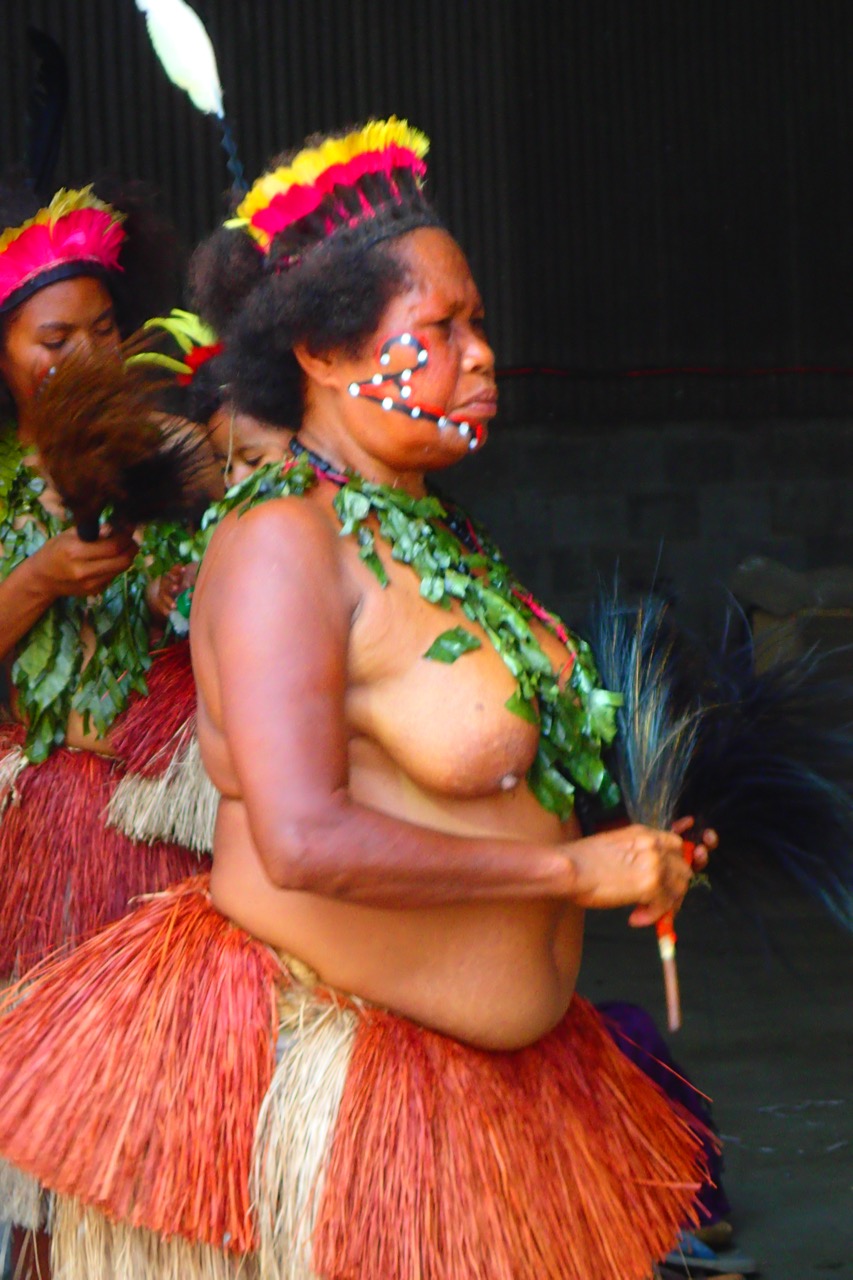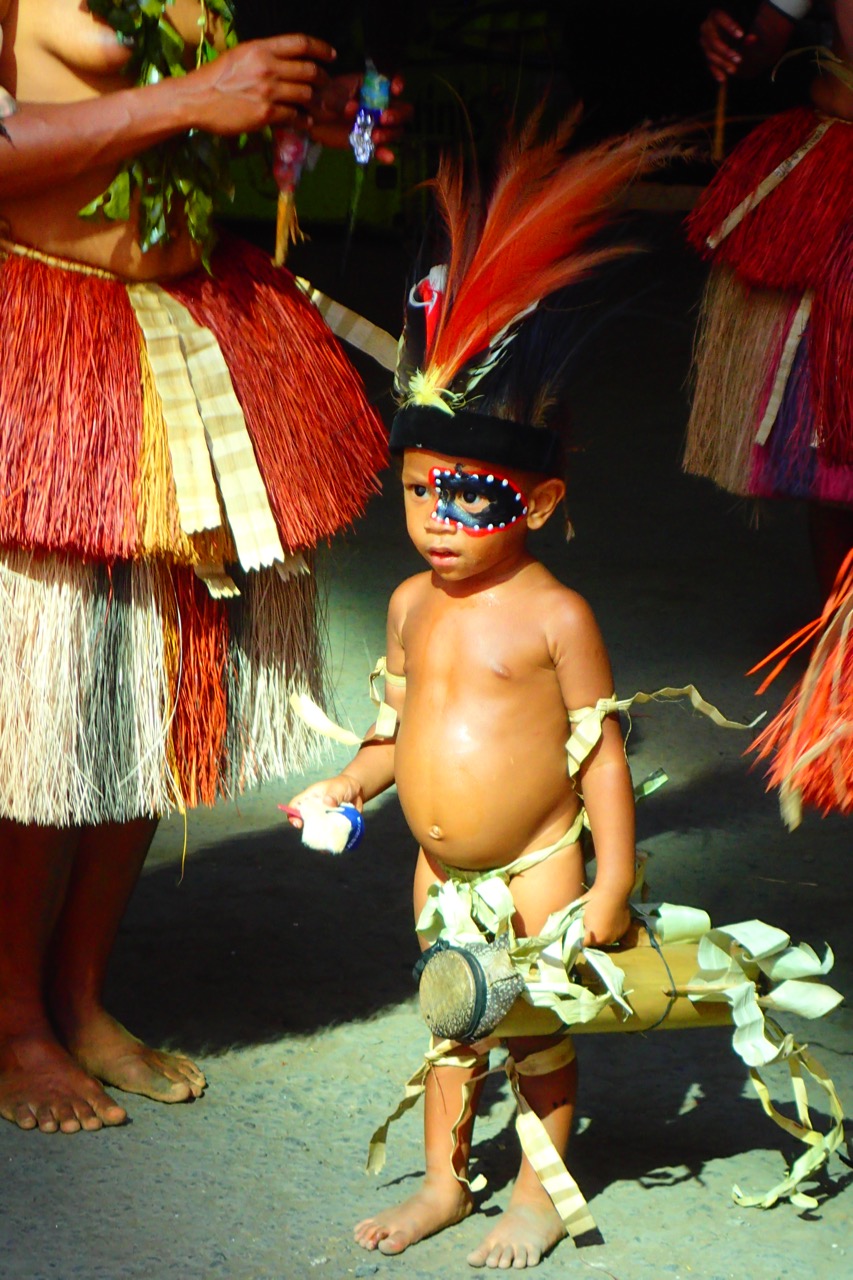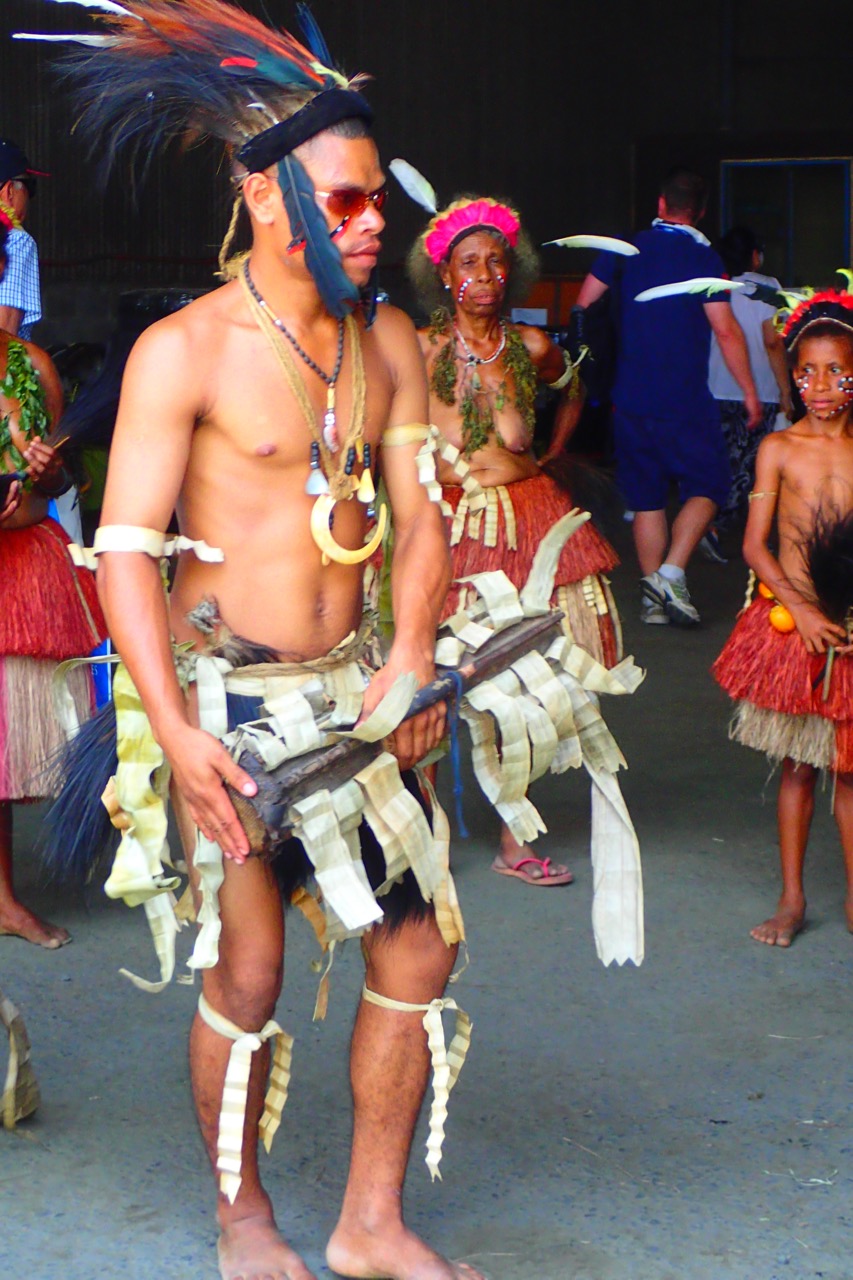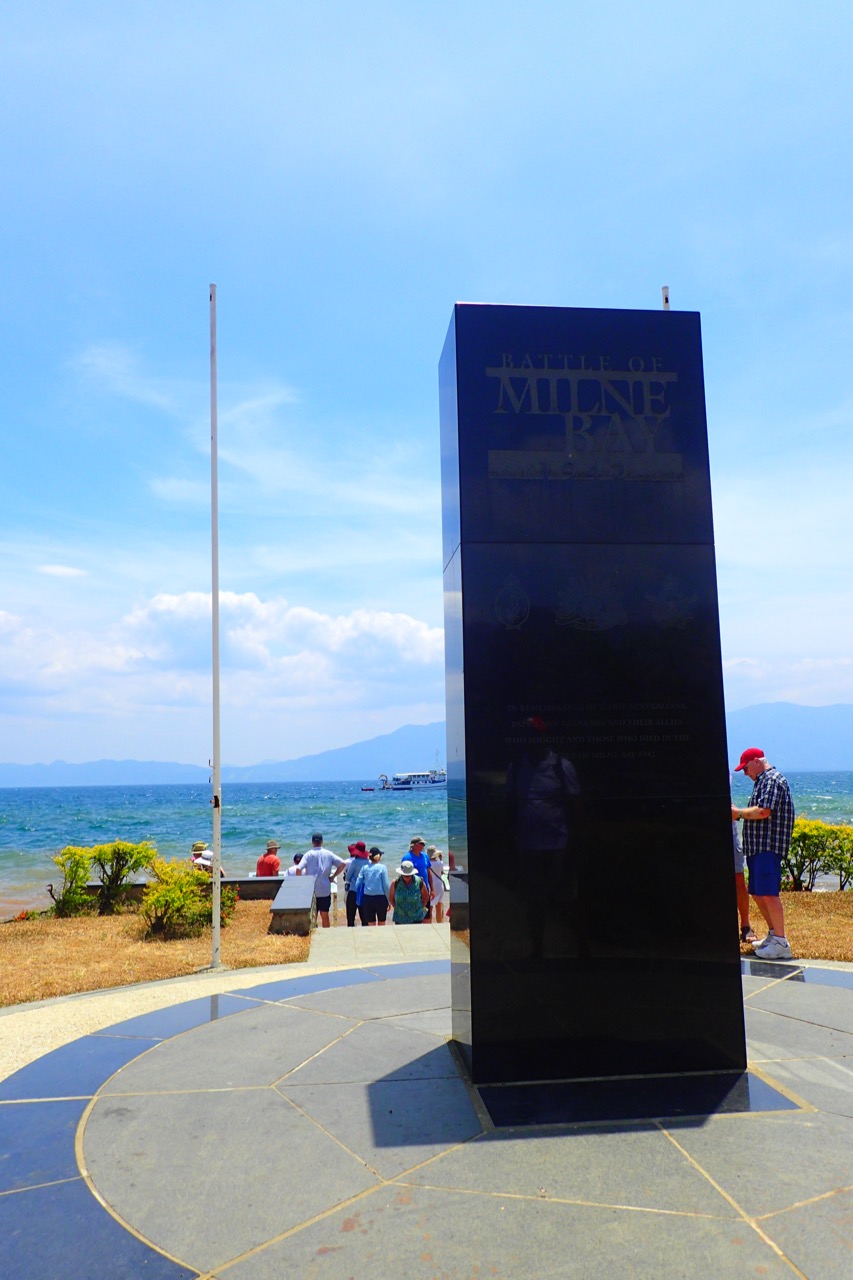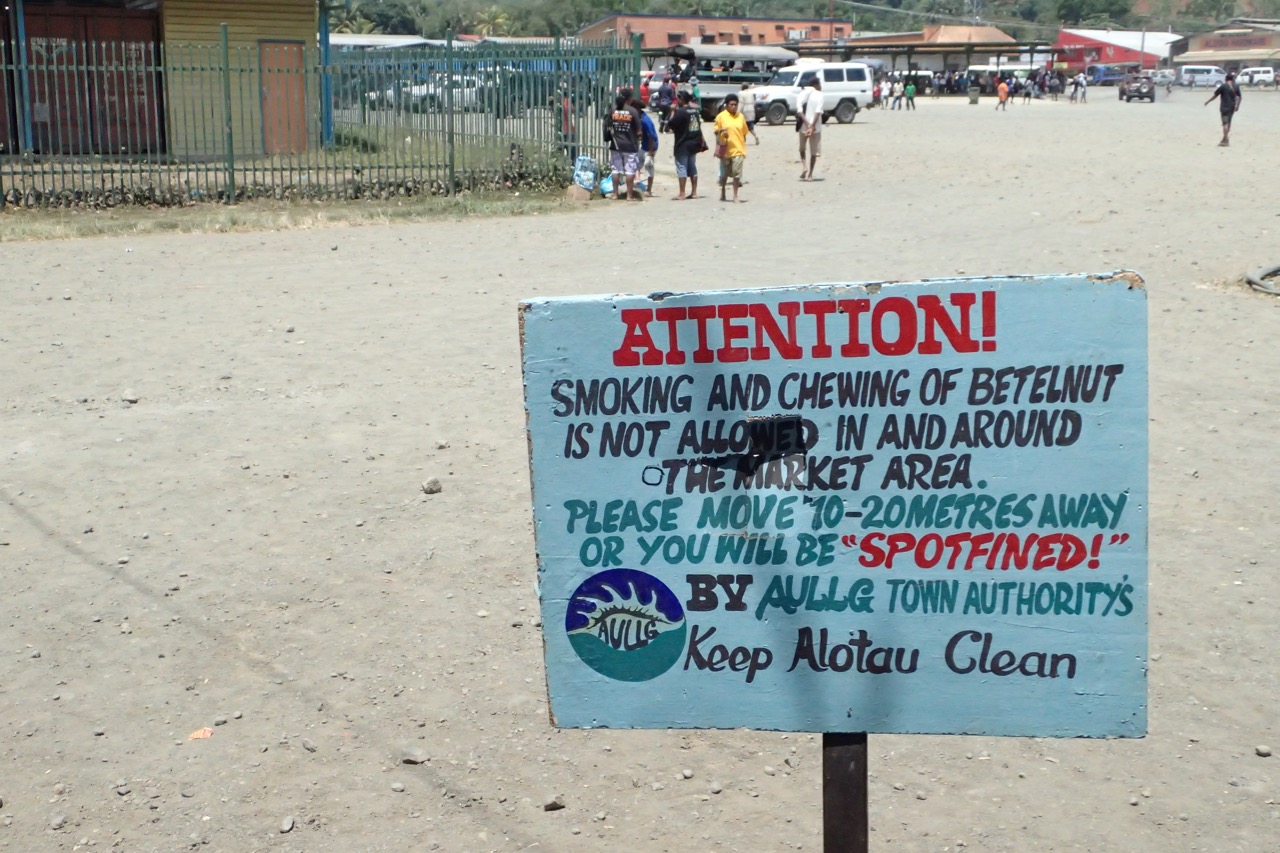Up bright and early from the trip from Belgrade to Sarajevo – the theory being that the sooner we get to the borders (to be processed out of Serbia and then processed into Bosnia) the better. Simon is watching live webcams of the state of the borders on his phone, and he tells us it’s not busy yet.
But all good plans of mice and men are gang aft aglae! We don’t get far out of Belgrade and we run into a wee SNAFU… I say ‘wee’ but it’s gonna fuck up our entire schedule. The cops are pulling over tour buses and going over the driver’s logs to see if they’ve been working more than their regulated hours. Trucks and other commercial vehicles are going past us, but they’ve pulled up three tour buses. At this stage, it’s feeling like the 90s again and we’re going to be pumped for a bribe. But we wait and see… and we wait and see. Poor Chris, our driver, has had to print out a month of driving logs for scrutiny. 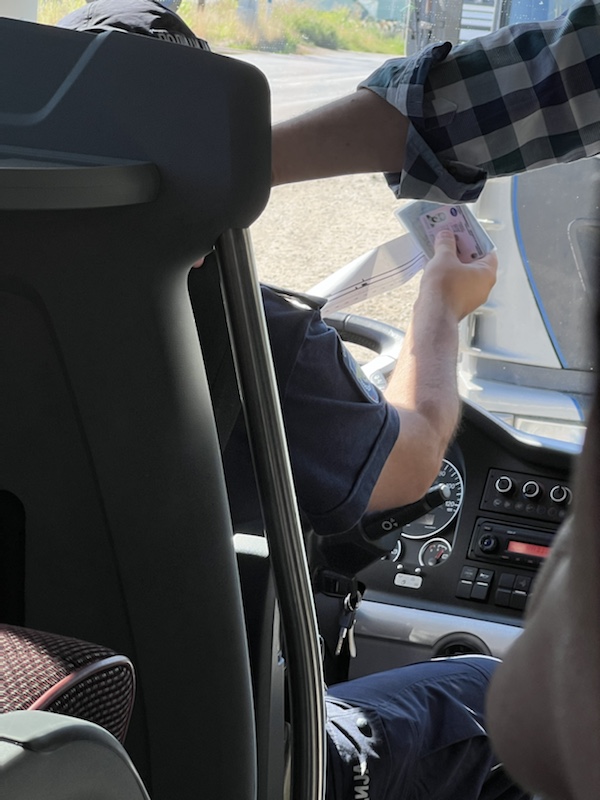 Next thing we know, Chris is being taken over to the cop cars, we are all asking Simon, how much of a bribe are we going to have to come up with. I’m writing this while looking at the cops outside the bus all standing around looking for problems. And unfortunately they find one!
Next thing we know, Chris is being taken over to the cop cars, we are all asking Simon, how much of a bribe are we going to have to come up with. I’m writing this while looking at the cops outside the bus all standing around looking for problems. And unfortunately they find one!
Chris has recently been on two weeks leave (part of the months worth of records the copy’s wanted) which clearly show the vehicle wasn’t being driven during that time, but it does however show he is logged into he bush – his ID card was in the bus while he is on vacation and that is a no-no. He’s supposed to remove his card when he’s not driving so that no one else can use his log in. No amount of Chris telling them he owns the bus and no one but him drives it is helping and the next thing we know he’s being driven off in the back of the cop car to go to an ATM to pay a fine for leaving his card logged into the bus!
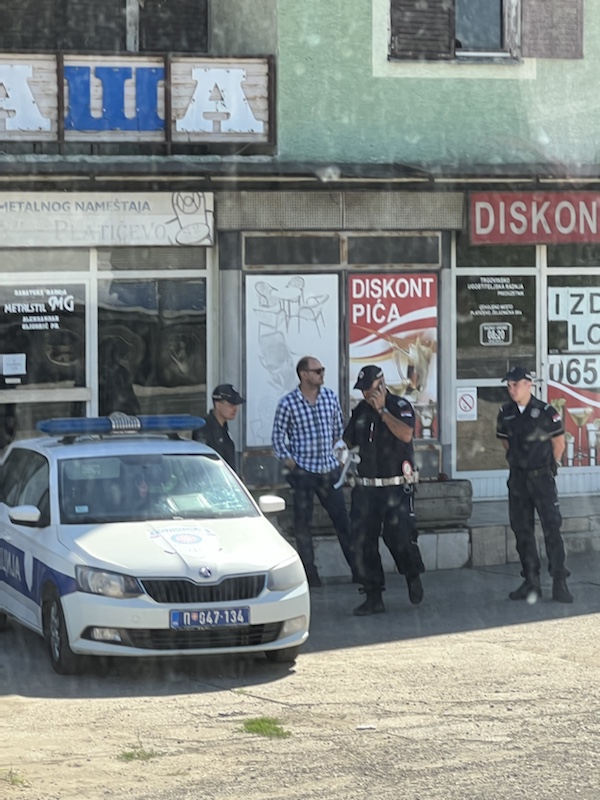 FFS guys, can’t we just pay a bribe and be on our way like the other two buses. Simon literally just said to us all, ‘The other two buses, they were lucky, they just pay a bribe and keep going.’ But no, they had to find something. Eventually he comes back and we are back on our way to the Serbian/Bosnian border.
FFS guys, can’t we just pay a bribe and be on our way like the other two buses. Simon literally just said to us all, ‘The other two buses, they were lucky, they just pay a bribe and keep going.’ But no, they had to find something. Eventually he comes back and we are back on our way to the Serbian/Bosnian border.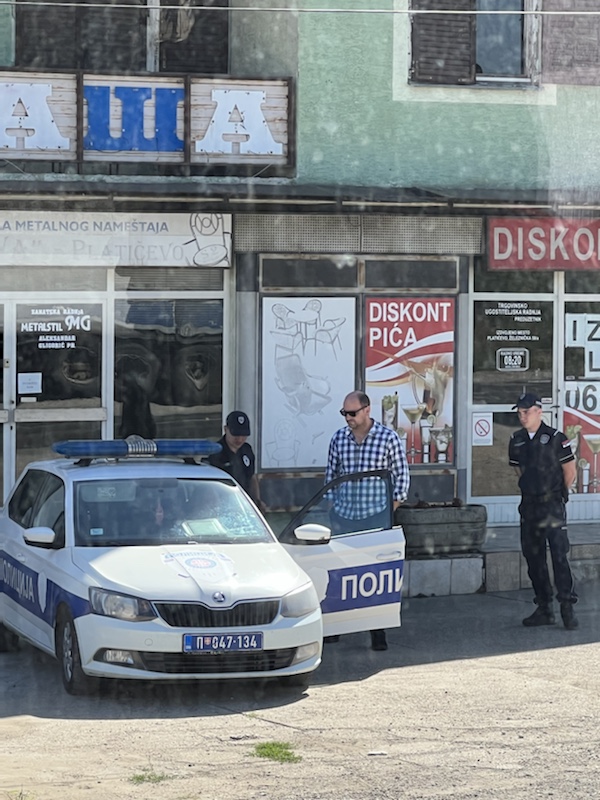 Holy shit! The hilarity doesn’t end there! We are barely 15 minutes down the road in another small town and a cop comes out to the bus while we are stopped at a light and tried to pull the bus over again – Chris argues with him, shows him his fine and the receipt – the cop looks pissed off and dismissively waves us on our way! I’m chatting with BigSal while this is unfolding and she hits me right in the flashbacks to ’95 with this one: “All you need is a Susan the Fruit to talk about how interactions with local law enforcement are good because it’s immersive and you can learn so much about the culture you wouldn’t have seen otherwise!” Laughed out loud at that one.
Holy shit! The hilarity doesn’t end there! We are barely 15 minutes down the road in another small town and a cop comes out to the bus while we are stopped at a light and tried to pull the bus over again – Chris argues with him, shows him his fine and the receipt – the cop looks pissed off and dismissively waves us on our way! I’m chatting with BigSal while this is unfolding and she hits me right in the flashbacks to ’95 with this one: “All you need is a Susan the Fruit to talk about how interactions with local law enforcement are good because it’s immersive and you can learn so much about the culture you wouldn’t have seen otherwise!” Laughed out loud at that one.
‘Serbia’s finest.’ Simon says dryly as we once more get back on the road. They must have been in the middle of some sort of ‘harass the tourist bus drivers’ week – and now we are well over an hour delayed for heading to Bosnia.
Passing through Sedmica – a town known for it’s gorgeous blue river with water that is a constant 6-7°C no matter what time of year it is. 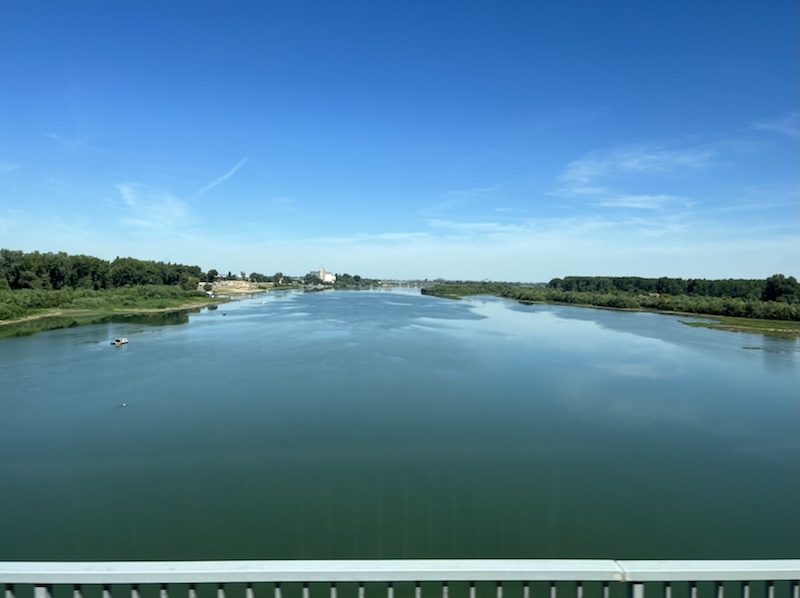 The country side is pretty enough though. Lots of old buildings, some not so old, all equally full of bullet holes and damage though.
The country side is pretty enough though. Lots of old buildings, some not so old, all equally full of bullet holes and damage though. 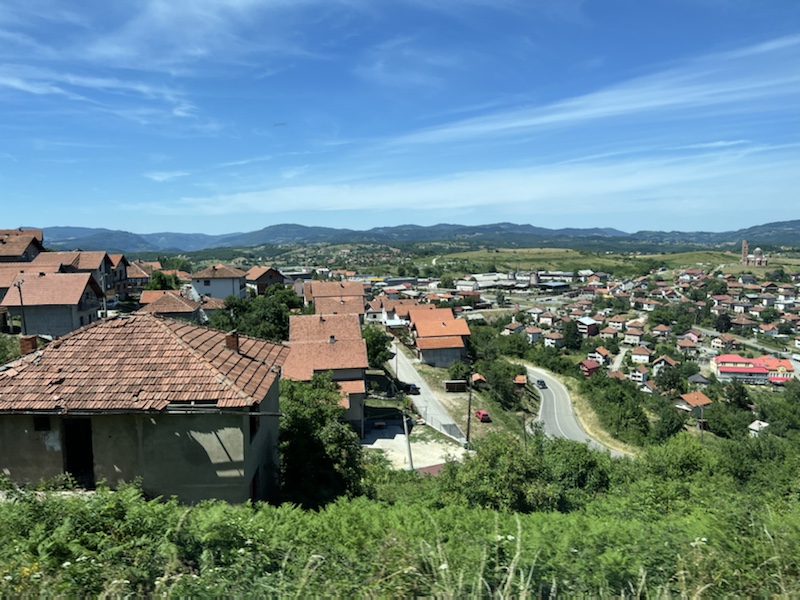

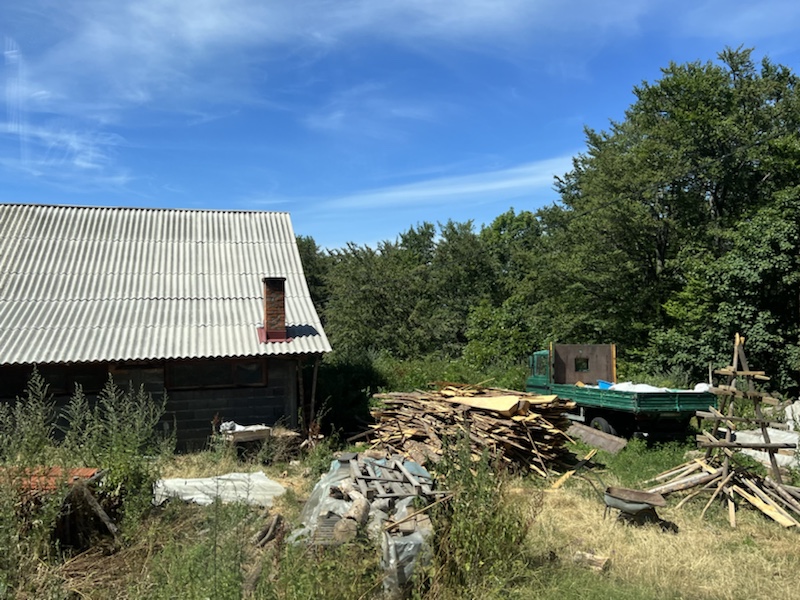 Eventually we get to the centre of Sarajevo and this bullet riddled, damaged building is where we pull up the bus for a meeting point. :/
Eventually we get to the centre of Sarajevo and this bullet riddled, damaged building is where we pull up the bus for a meeting point. :/ 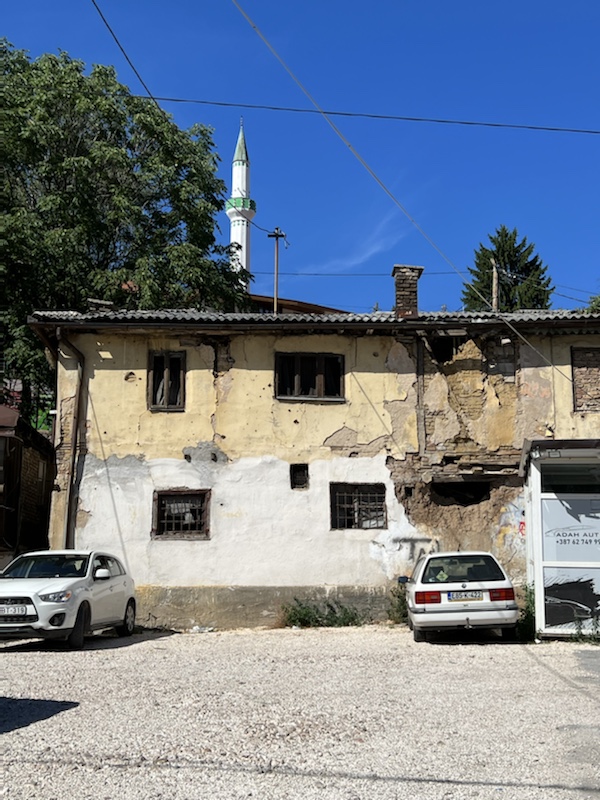 Like many other cities, Sarajevo is a divided town, the Old Town which is full of ancient and medieval buildings, churches, cathedrals, synagogues etc and the other side of the river is the New Town, full of corrupt building projects that locals can’t afford to live in – this seems to be a theme – Belgrade has plenty of these project areas too.
Like many other cities, Sarajevo is a divided town, the Old Town which is full of ancient and medieval buildings, churches, cathedrals, synagogues etc and the other side of the river is the New Town, full of corrupt building projects that locals can’t afford to live in – this seems to be a theme – Belgrade has plenty of these project areas too. 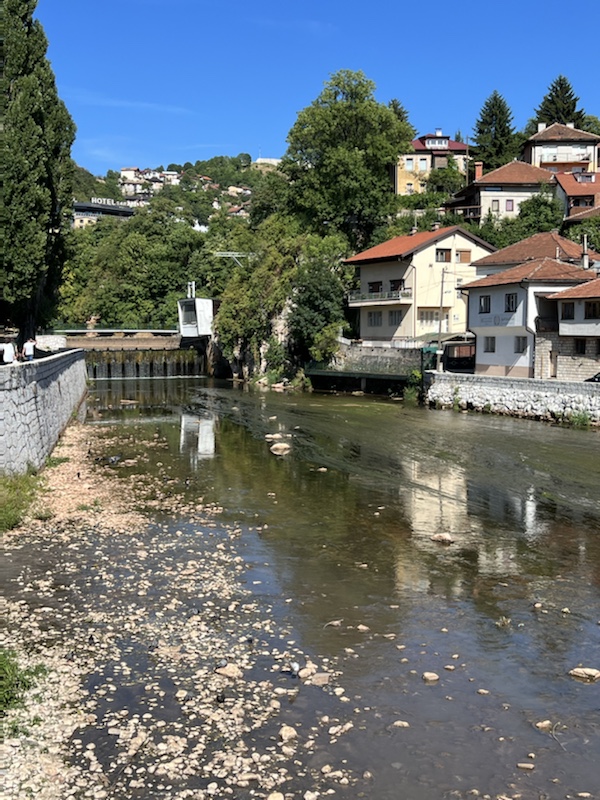 This beautiful building is a reconstruction of the original library that was on this site in the Old Town – it was badly damaged during the war and while they have been able to rebuild the library as it once was, many of the ancient and medieval texts it housed were lost forever.
This beautiful building is a reconstruction of the original library that was on this site in the Old Town – it was badly damaged during the war and while they have been able to rebuild the library as it once was, many of the ancient and medieval texts it housed were lost forever. 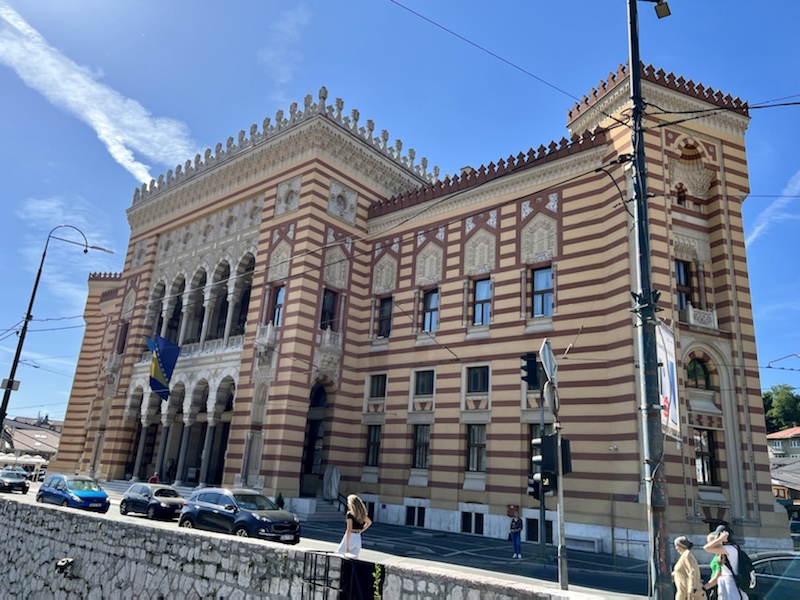
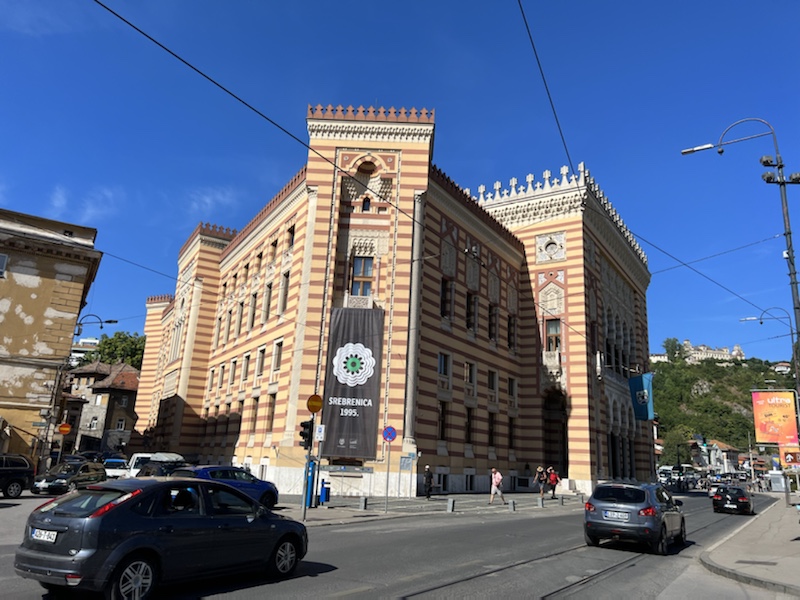 The Old Town is full of little winding alleyways on cobblestone streets, it’s like a mixture of Turkish bazaar, and Moroccan kasbah having neither flavour of it’s own nor enough characteristics of either??? (That made sense in my head even if it doesn’t to any other reader!).
The Old Town is full of little winding alleyways on cobblestone streets, it’s like a mixture of Turkish bazaar, and Moroccan kasbah having neither flavour of it’s own nor enough characteristics of either??? (That made sense in my head even if it doesn’t to any other reader!). 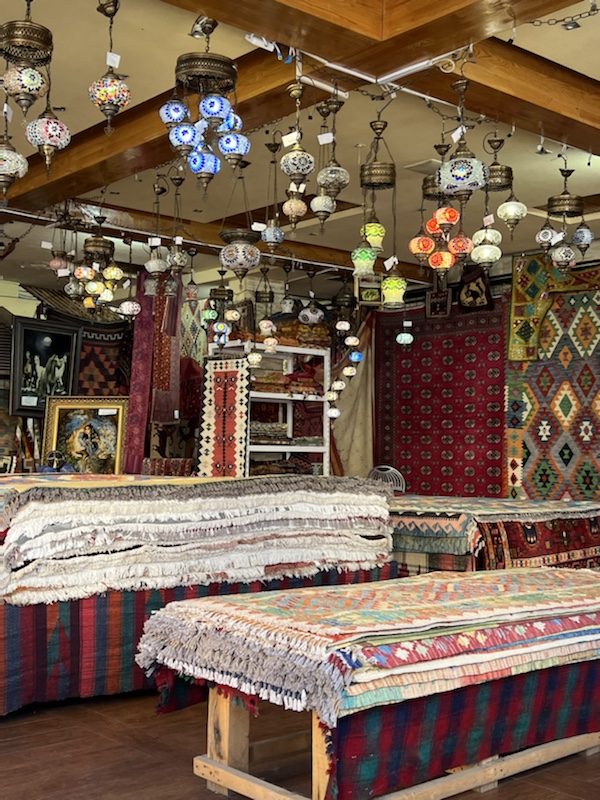
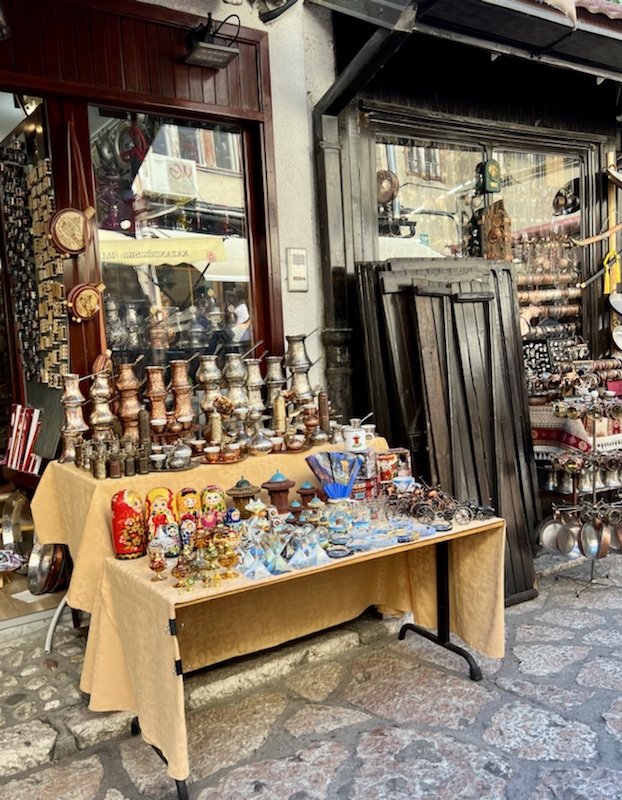
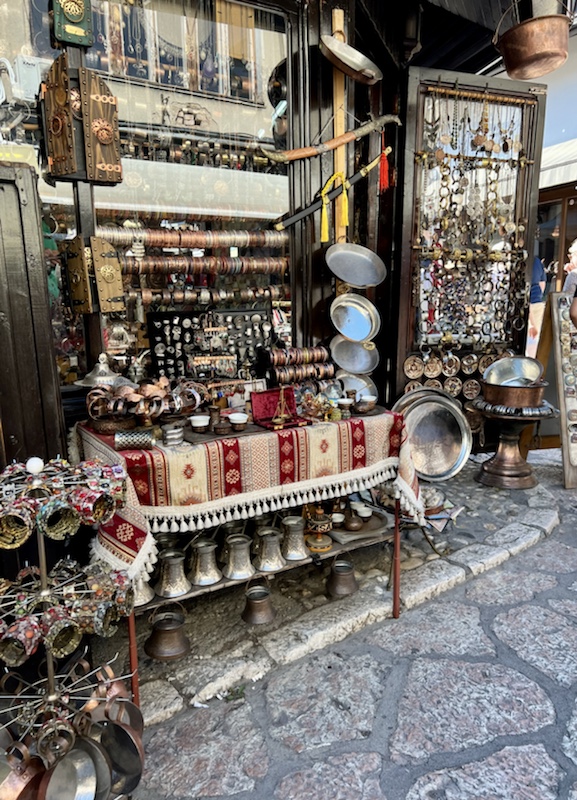 Bosnian’s are mad for their coffee apparently and white they are adamant they make it a special way that is nothing like the Turkish way of making coffee …. to the untrained eye (ie: mine), it looks exactly like the Turkish way of making coffee!
Bosnian’s are mad for their coffee apparently and white they are adamant they make it a special way that is nothing like the Turkish way of making coffee …. to the untrained eye (ie: mine), it looks exactly like the Turkish way of making coffee! 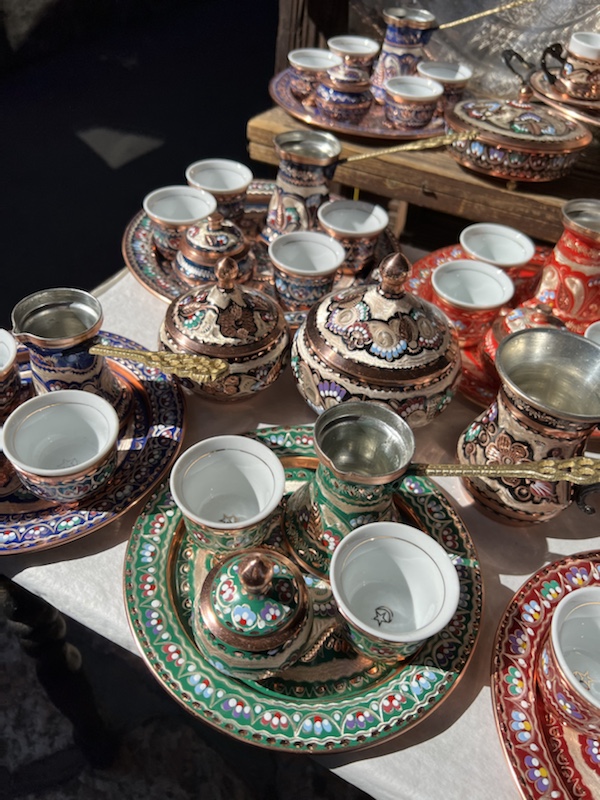
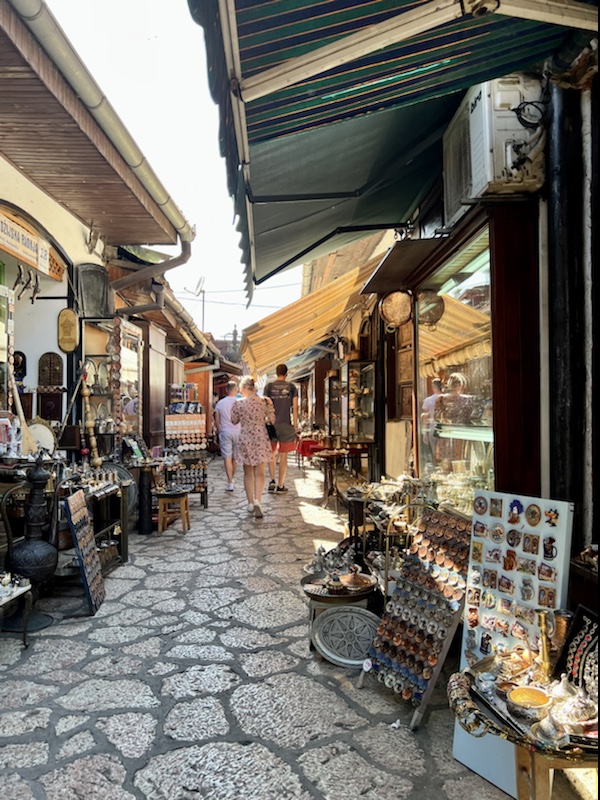
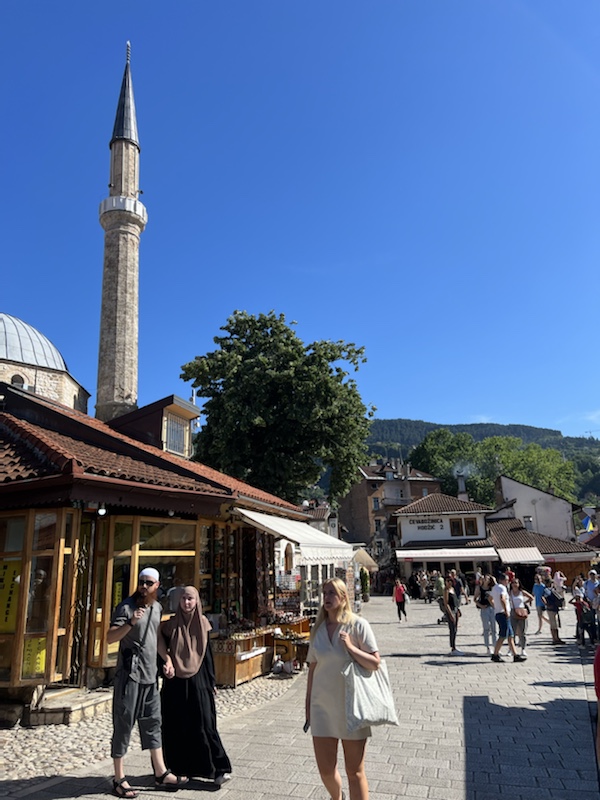 This is the Sebilj Fountain – it was built in the Ottoman style in 1753. It’s one of those legendary fountains that people believe if you drink from this fountain you will return to Sarajevo someday – I guess we are all going to be one time visitors because none of us are drinking anything that isn’t coming out of sealed plastic bottles atm!
This is the Sebilj Fountain – it was built in the Ottoman style in 1753. It’s one of those legendary fountains that people believe if you drink from this fountain you will return to Sarajevo someday – I guess we are all going to be one time visitors because none of us are drinking anything that isn’t coming out of sealed plastic bottles atm!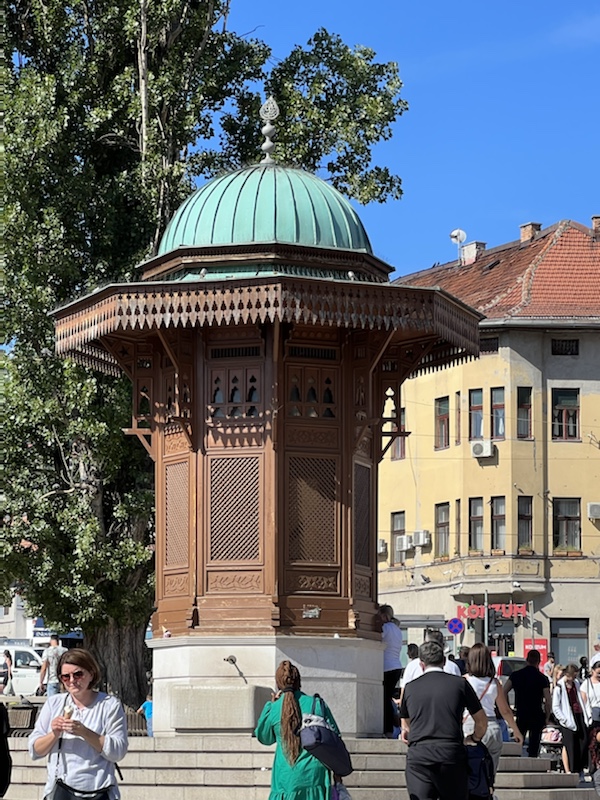
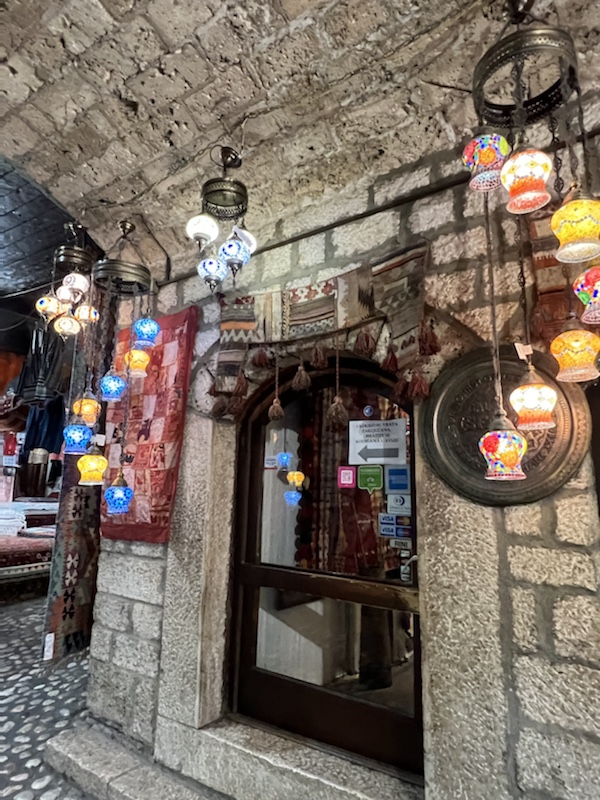 This was the oldest inn in Sarajevo, it used to be a stop for visitors travelling with their horses, and now the courtyard where visitors would be received is now a thriving restaurant and the stables which lined the courtyard are now shops.
This was the oldest inn in Sarajevo, it used to be a stop for visitors travelling with their horses, and now the courtyard where visitors would be received is now a thriving restaurant and the stables which lined the courtyard are now shops.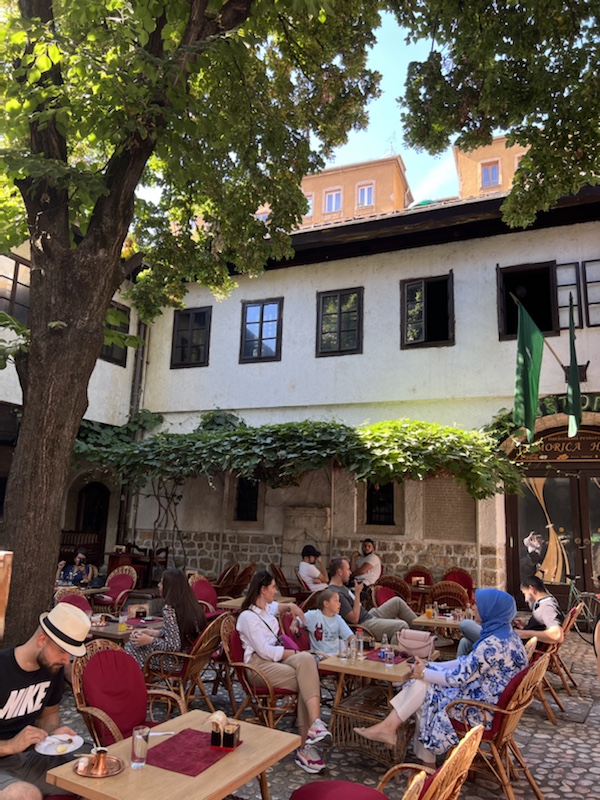 You can see the huge wooden beams that made up the stable roofs.
You can see the huge wooden beams that made up the stable roofs.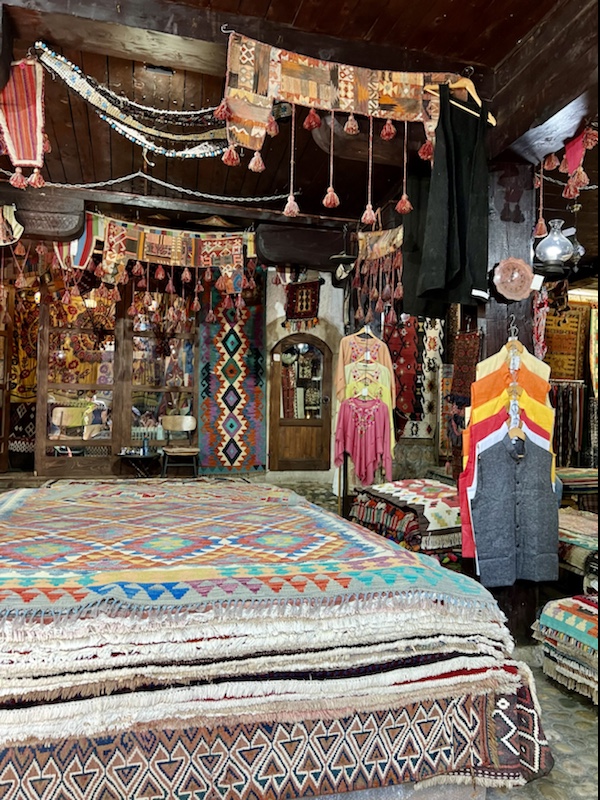 I’m also in an intense love/hate relationship with cobblestones this trip thanks to the fibromyalgia I was diagnosed with in 2019… my feet are fucking killing me ALL THE TIME, let alone with the uneven surfaces. The hours on the bus are also not helping and each time we get off the bus, I feel like I’m getting off a long haul flight with slightly swollen feet… normal cobbles are bad enough, but these ones in this town are really just rocks planted in concrete worn smooth, so they’re proving extra fun.
I’m also in an intense love/hate relationship with cobblestones this trip thanks to the fibromyalgia I was diagnosed with in 2019… my feet are fucking killing me ALL THE TIME, let alone with the uneven surfaces. The hours on the bus are also not helping and each time we get off the bus, I feel like I’m getting off a long haul flight with slightly swollen feet… normal cobbles are bad enough, but these ones in this town are really just rocks planted in concrete worn smooth, so they’re proving extra fun.
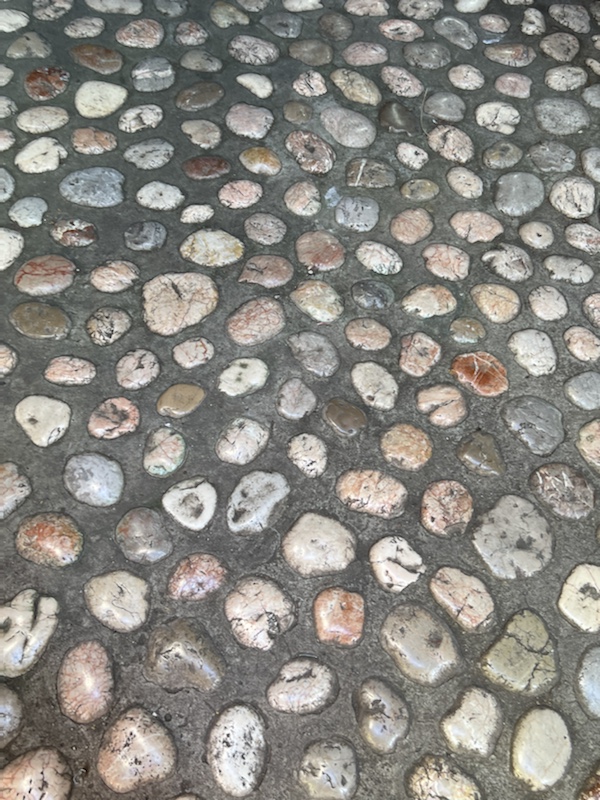 In the middle of the old town is a Mosque, a Synagogue and a Catholic Church, we see here again the one-up-man-ship of each party trying to be superior to the other – part of it is about religion and yet weirdly not about religion at all. Some 70% of Serbians are not practicing any religion, but their religion defines their heritage and ethnicities in a way we just don’t’ really get back home. The Croats are Catholic and Orthodox, the Bosnians are Muslim and the Serbians lost as many as 80,000 of their Jewish during the Srebrinca Genocide (this is really contentious, a huge proportion of Bosnians would never use the term ‘genocide’ to describe what happened to the Jewish people in Serbia- but I don’t know what else it’s called when they’re rounded up into exterminated in mass graves). 😐
In the middle of the old town is a Mosque, a Synagogue and a Catholic Church, we see here again the one-up-man-ship of each party trying to be superior to the other – part of it is about religion and yet weirdly not about religion at all. Some 70% of Serbians are not practicing any religion, but their religion defines their heritage and ethnicities in a way we just don’t’ really get back home. The Croats are Catholic and Orthodox, the Bosnians are Muslim and the Serbians lost as many as 80,000 of their Jewish during the Srebrinca Genocide (this is really contentious, a huge proportion of Bosnians would never use the term ‘genocide’ to describe what happened to the Jewish people in Serbia- but I don’t know what else it’s called when they’re rounded up into exterminated in mass graves). 😐
The result of this, being religious as a way of identifying your ethnicity while not really being a practicing religious person means that the Fazi Husrev-Beg mosque at the centre of the Old Town is very welcoming to everyone. There are still women’s sides and men’s side and shoes are off and scarves are on, but they are not so strict with their prayer times etc.
It’s a relatively simple mosque with one minaret and a single dome, and was built in the 1500s century. At the time it was built, a very forward thinking engineer/architect suggested they build a public toilet nearby by persuading the imams that they wouldn’t want their workers doing their business all over the ground where their beautiful mosque was going to be – and wouldn’t you know it, the public toilets they built are still there and in operation today, though I’m inclined to think the coin operated turnstiles are a more modern addition.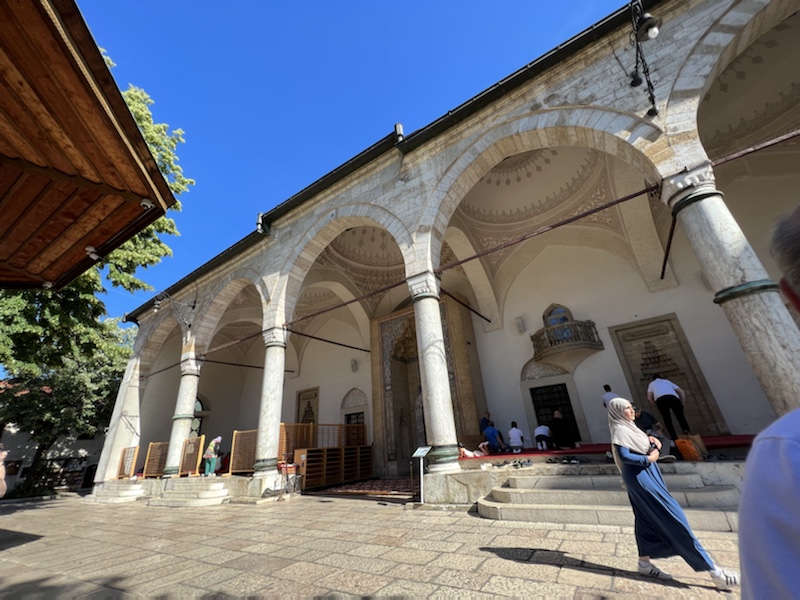
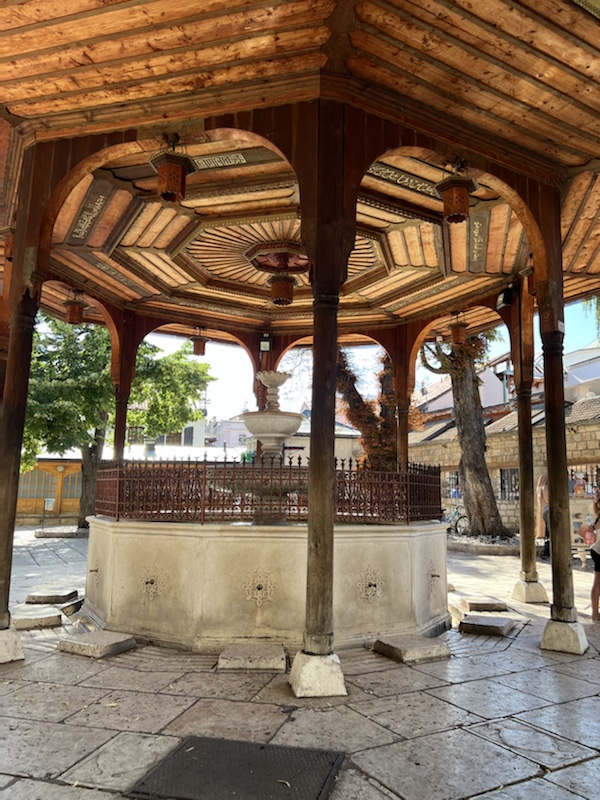
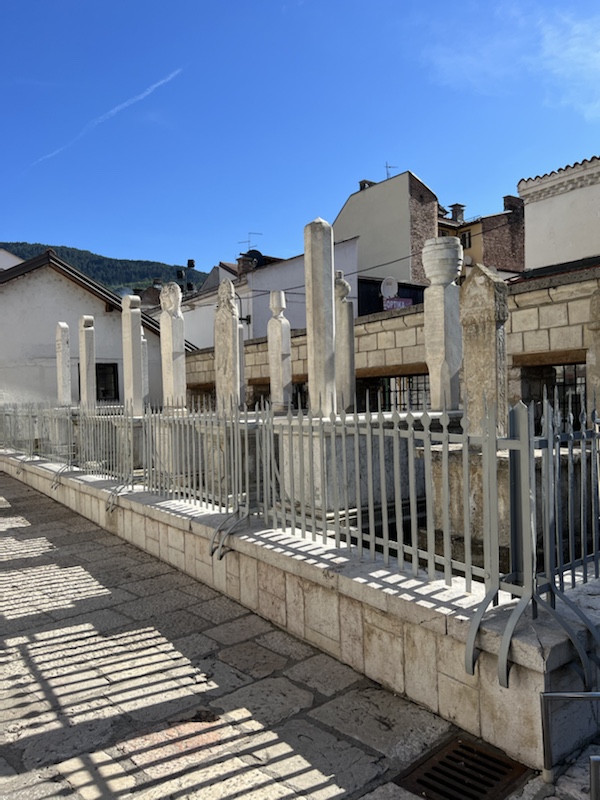 Ramadan feasting clock – this clock down’s show actual time as we know it – it is set to show when sundown occurs so people fasting know exactly when it’s okay to eat.
Ramadan feasting clock – this clock down’s show actual time as we know it – it is set to show when sundown occurs so people fasting know exactly when it’s okay to eat. 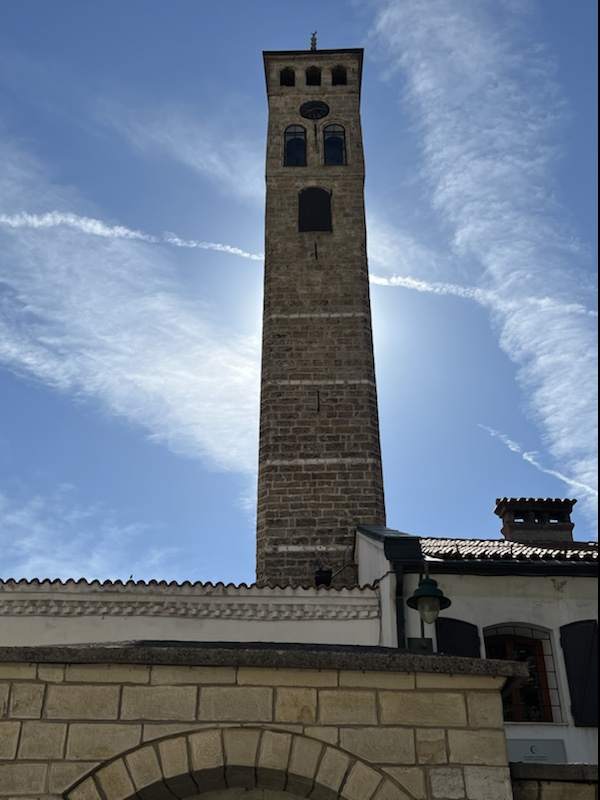 This is a replica of the famous vehicle that the Archduke Ferdinand was in with his wife, Sofia when he was assassinated , triggering the WWI. Sounds like the entire plot was a bit of a clusterfuck and it was luck that the ragtag team of assassins managed to get anything right. A previous assassination attempt had failed and the various members of the untrained team were sitting around a coffee shop figuring out how they were going to kill him before they got in trouble with their handlers, when the Archduke’s driver took wrong turn and stopped them right in front of the coffee shop in question. One of the assassins opportunistically shot the Archduke, while another tried to immediately kill himself rather than being captured and chomped on an expired cyanide pill that just made him immediately ill, but didn’t kill him… he then ran away spewing his guts up and jumped off the nearby bridge which is barely 4m off the ground and doesn’t have much water in it, so he ended up being apprehended with two broken legs and sick from his failed suicide attempt. And yep, these stupid teenage pricks started a World War.
This is a replica of the famous vehicle that the Archduke Ferdinand was in with his wife, Sofia when he was assassinated , triggering the WWI. Sounds like the entire plot was a bit of a clusterfuck and it was luck that the ragtag team of assassins managed to get anything right. A previous assassination attempt had failed and the various members of the untrained team were sitting around a coffee shop figuring out how they were going to kill him before they got in trouble with their handlers, when the Archduke’s driver took wrong turn and stopped them right in front of the coffee shop in question. One of the assassins opportunistically shot the Archduke, while another tried to immediately kill himself rather than being captured and chomped on an expired cyanide pill that just made him immediately ill, but didn’t kill him… he then ran away spewing his guts up and jumped off the nearby bridge which is barely 4m off the ground and doesn’t have much water in it, so he ended up being apprehended with two broken legs and sick from his failed suicide attempt. And yep, these stupid teenage pricks started a World War. 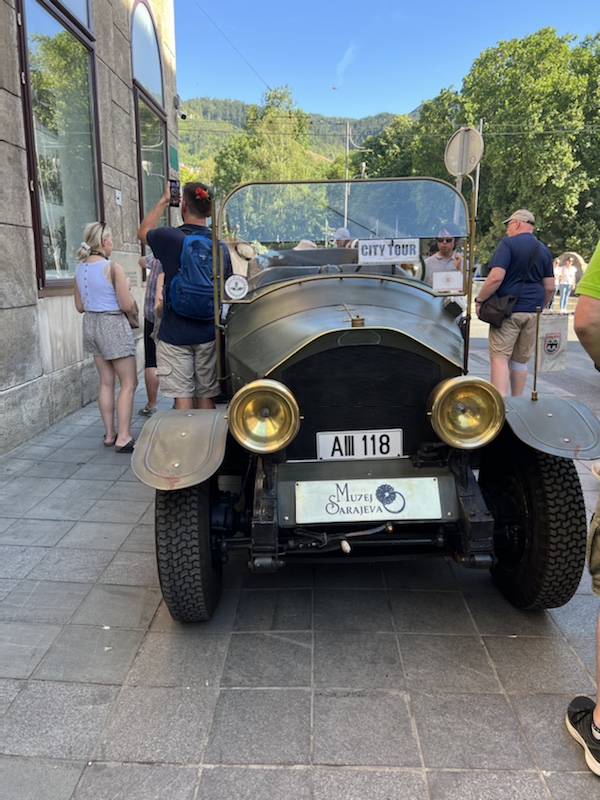 The covered markets in the Old Town
The covered markets in the Old Town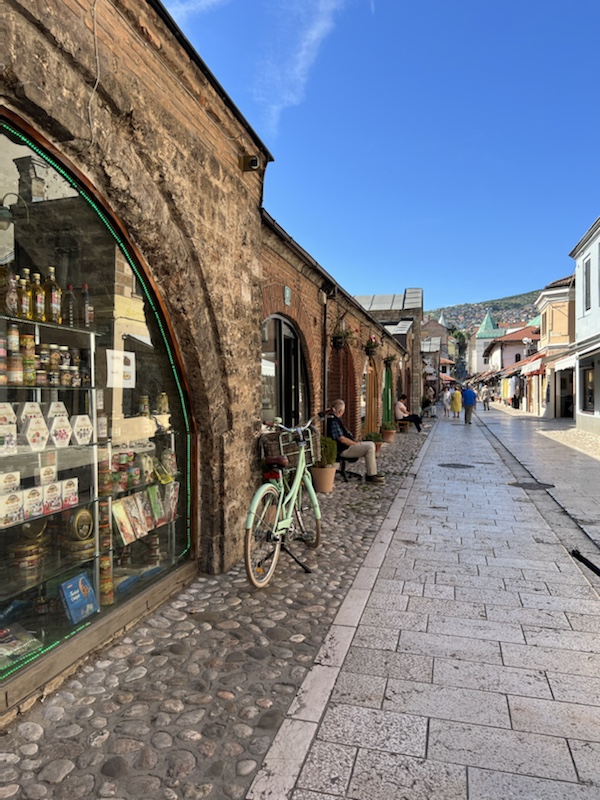 Compete with Bosnian Delight stores – not Turkish Delight, mind you, Bosnian… though stuffed if I can spot the difference.
Compete with Bosnian Delight stores – not Turkish Delight, mind you, Bosnian… though stuffed if I can spot the difference. 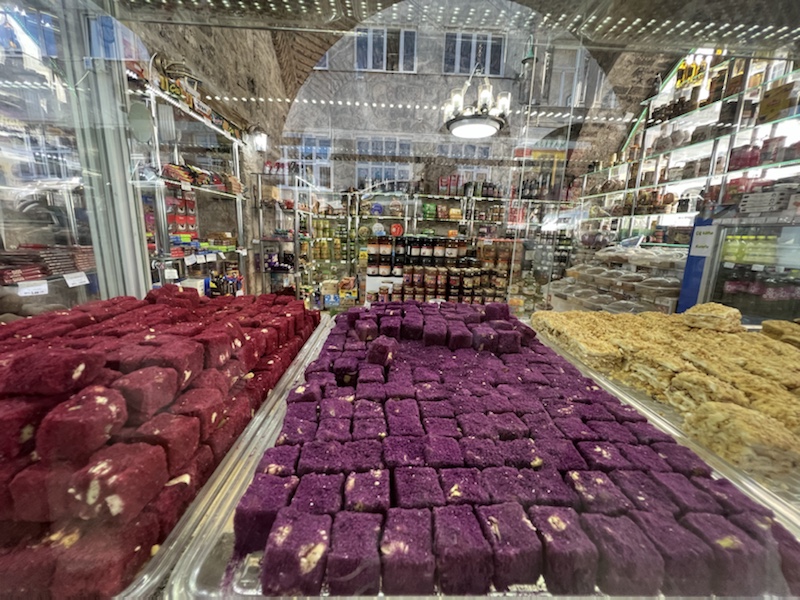 After this
After this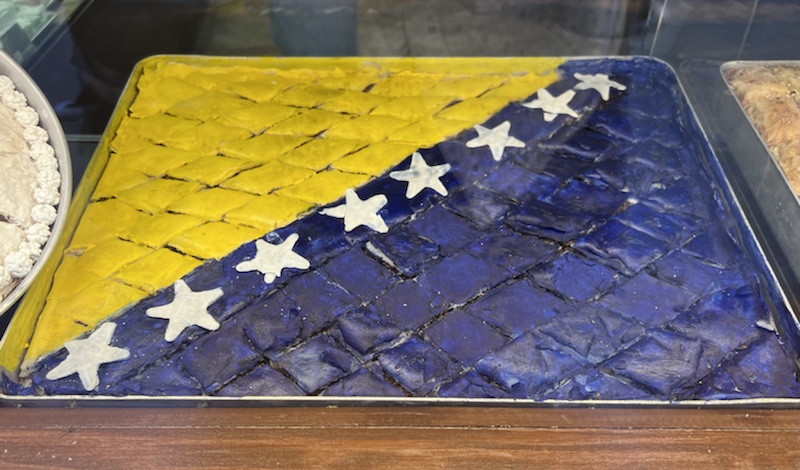
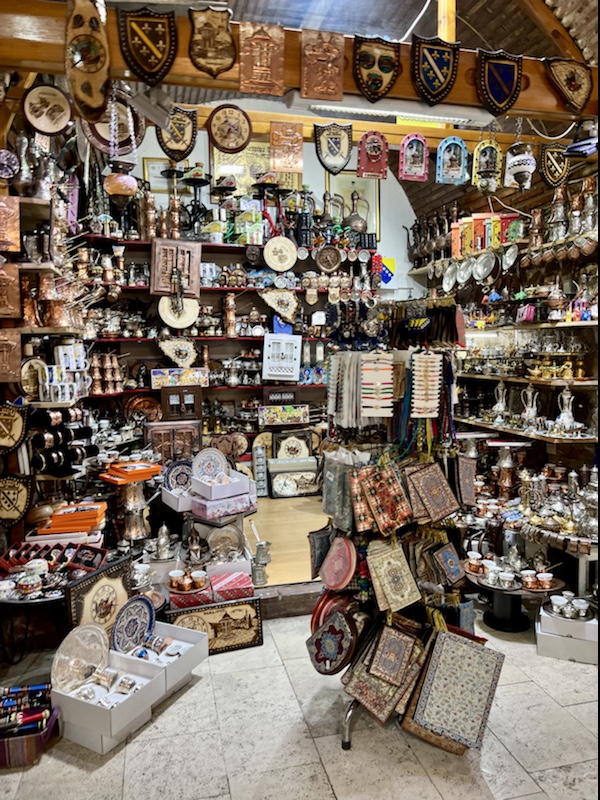
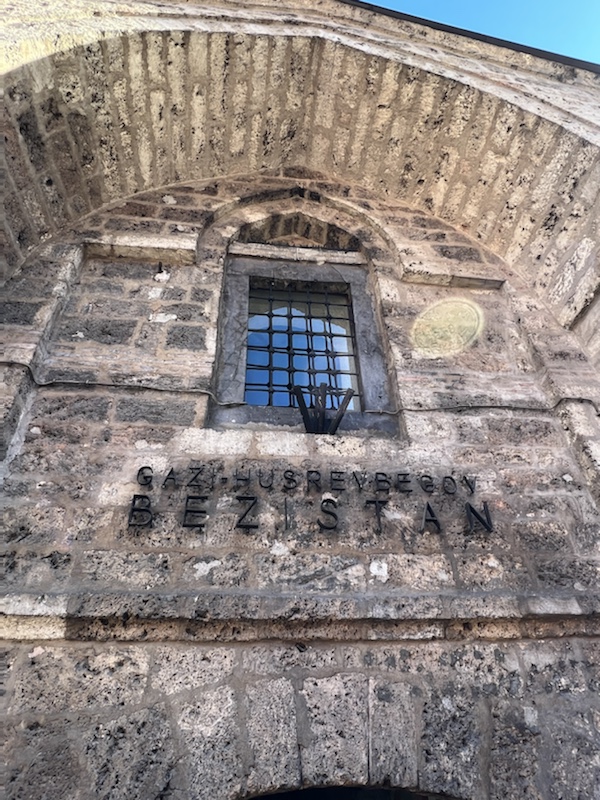 The Catholic Church in the centre of town, which is as big as they could make it in the space that it previously occupied. During the Balkans War (and Iknow this isn’t coming across very well in my pictures) the enemy armies that were attacking Sarajevo would take high positions on the hills around the town… you can see their elevated advantage from nearly every direction around the city. People coming in and out of the churches and shops were at a huge disadvantage trying to move about town to find supplies of water and food.
The Catholic Church in the centre of town, which is as big as they could make it in the space that it previously occupied. During the Balkans War (and Iknow this isn’t coming across very well in my pictures) the enemy armies that were attacking Sarajevo would take high positions on the hills around the town… you can see their elevated advantage from nearly every direction around the city. People coming in and out of the churches and shops were at a huge disadvantage trying to move about town to find supplies of water and food.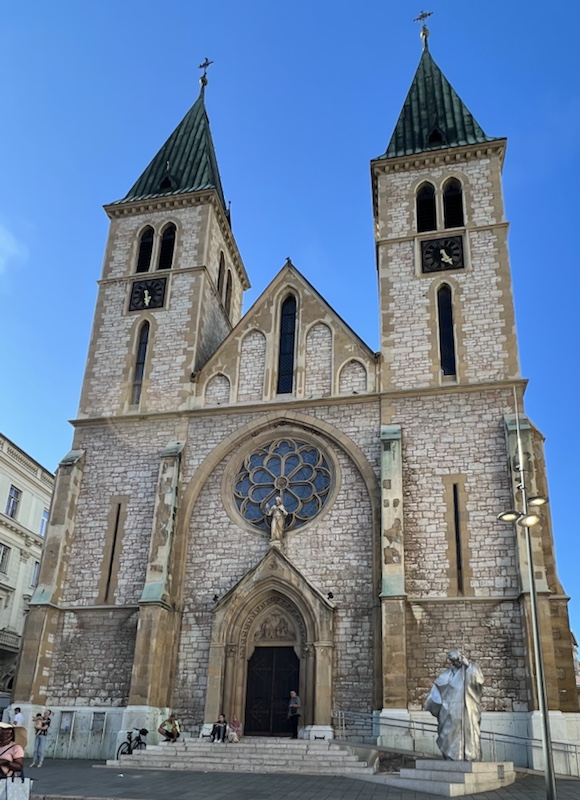 Out front of this church is a pitted piece of concrete which shows the place where some children were killed by snipers. They continue to pain the pitted concrete to remind people of the horrors that happened here.Our guide, said his mother never let him leave the house as a small child in a red t-shirt because it was too easy a target for the snipers… fuck that! I wouldn’t’ have let my kid leave the house at all!
Out front of this church is a pitted piece of concrete which shows the place where some children were killed by snipers. They continue to pain the pitted concrete to remind people of the horrors that happened here.Our guide, said his mother never let him leave the house as a small child in a red t-shirt because it was too easy a target for the snipers… fuck that! I wouldn’t’ have let my kid leave the house at all!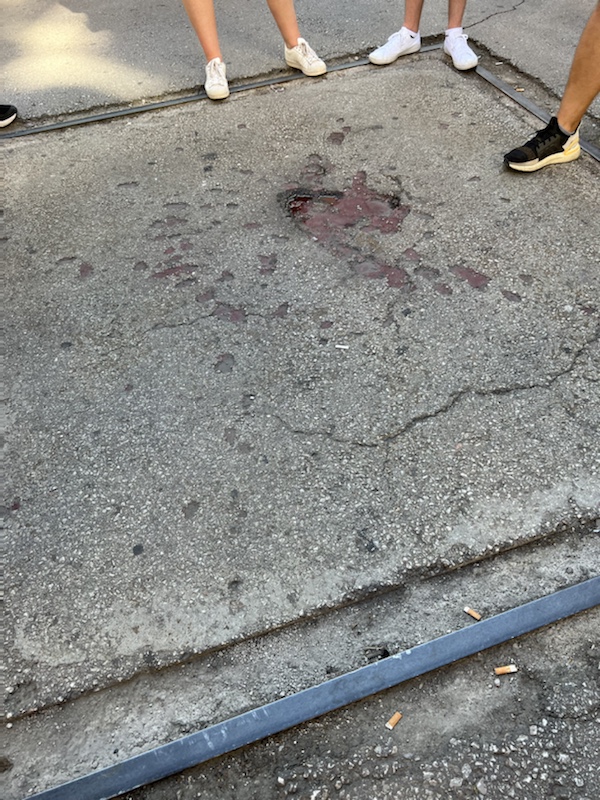
If we hadn’t been held up with the cops for so long this morning I would have possibly tried to go see this exhibit of the Srebrenica Genocide. It is something I am not particularly educated on, and I feel it’s important that people learn about these historical incidents and don’t forget the victims. 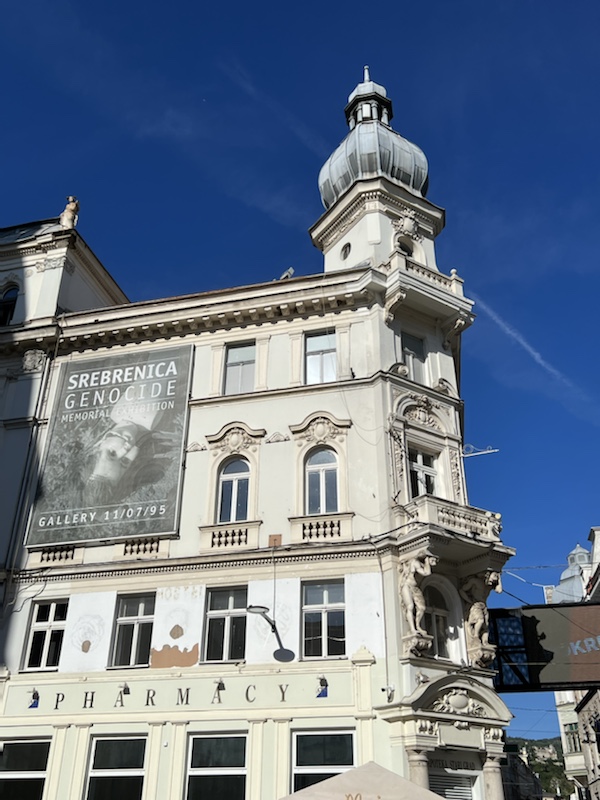 After our quick (and I mean quick!) walking tour of Sarajevo we had some free time to go shopping, have a poke about and find some dinner. Simon recommended a small restaurant back near the library and instructed us all to try the Cevapi, pronounced ‘cheh-vah-pee’, (basically ‘minced meat fingers), that are served with a doughy pita bread, raw onions and yoghurt drinks. I’m always up for the local food, and they serve them in hands – literally five meat fingers or ten. I opted for a small serve and it was quite tasty – the recipe calls for 80% beef, 20% veal and some salt, so it’s just meat sausage without any skins.
After our quick (and I mean quick!) walking tour of Sarajevo we had some free time to go shopping, have a poke about and find some dinner. Simon recommended a small restaurant back near the library and instructed us all to try the Cevapi, pronounced ‘cheh-vah-pee’, (basically ‘minced meat fingers), that are served with a doughy pita bread, raw onions and yoghurt drinks. I’m always up for the local food, and they serve them in hands – literally five meat fingers or ten. I opted for a small serve and it was quite tasty – the recipe calls for 80% beef, 20% veal and some salt, so it’s just meat sausage without any skins. 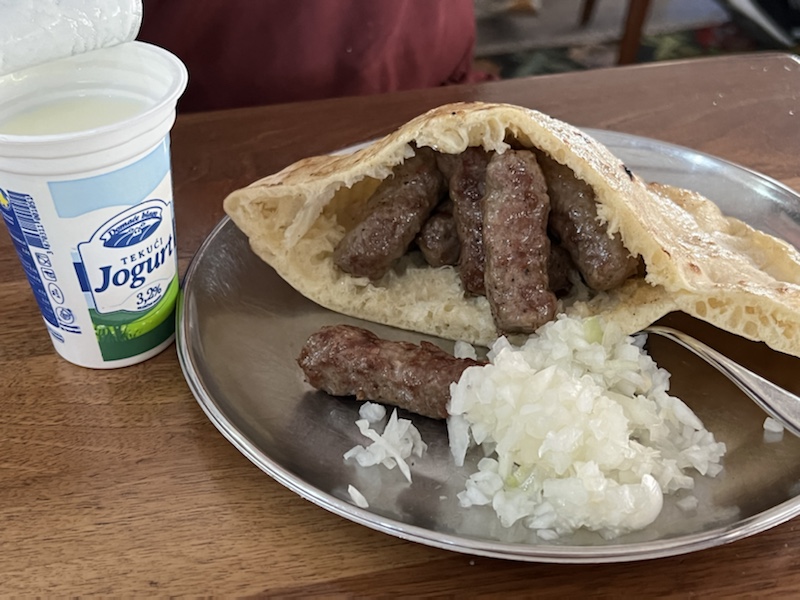 After this it was off to our hotel, on the way we saw many many more buildings that were showing signs of the snipers’ handiwork during the war. I don’t know enough about this war – I vaguely remember Milosovich being mentioned a lot in the news, but spending time with Simon hasn’t really cleared it up. With three wearing factions, sometimes each in ally-ship with each other and then spinning on a dime to suddenly be fighting with their former allies, it’s all very complicated. I’m not sure anyone won…
After this it was off to our hotel, on the way we saw many many more buildings that were showing signs of the snipers’ handiwork during the war. I don’t know enough about this war – I vaguely remember Milosovich being mentioned a lot in the news, but spending time with Simon hasn’t really cleared it up. With three wearing factions, sometimes each in ally-ship with each other and then spinning on a dime to suddenly be fighting with their former allies, it’s all very complicated. I’m not sure anyone won…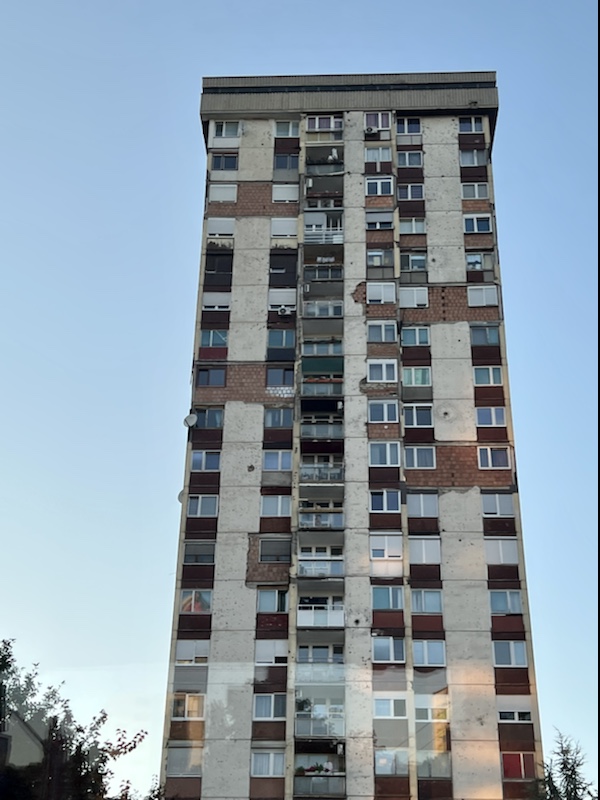
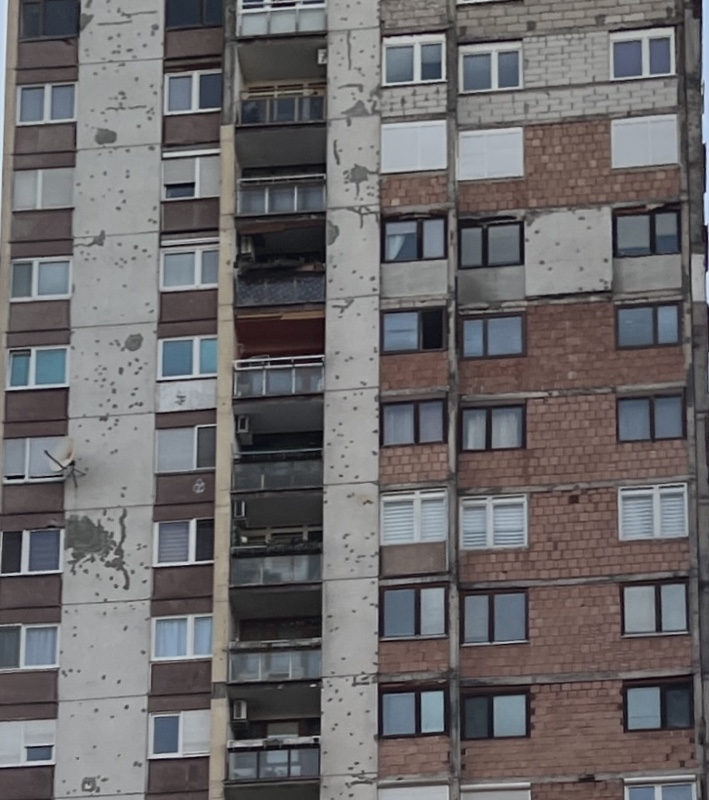

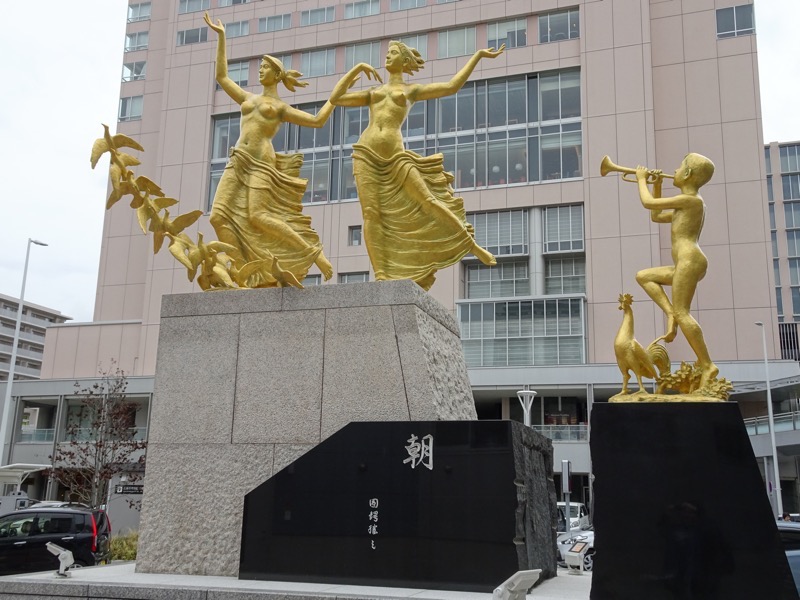 Our first stop was to Hiroshima Castle…
Our first stop was to Hiroshima Castle…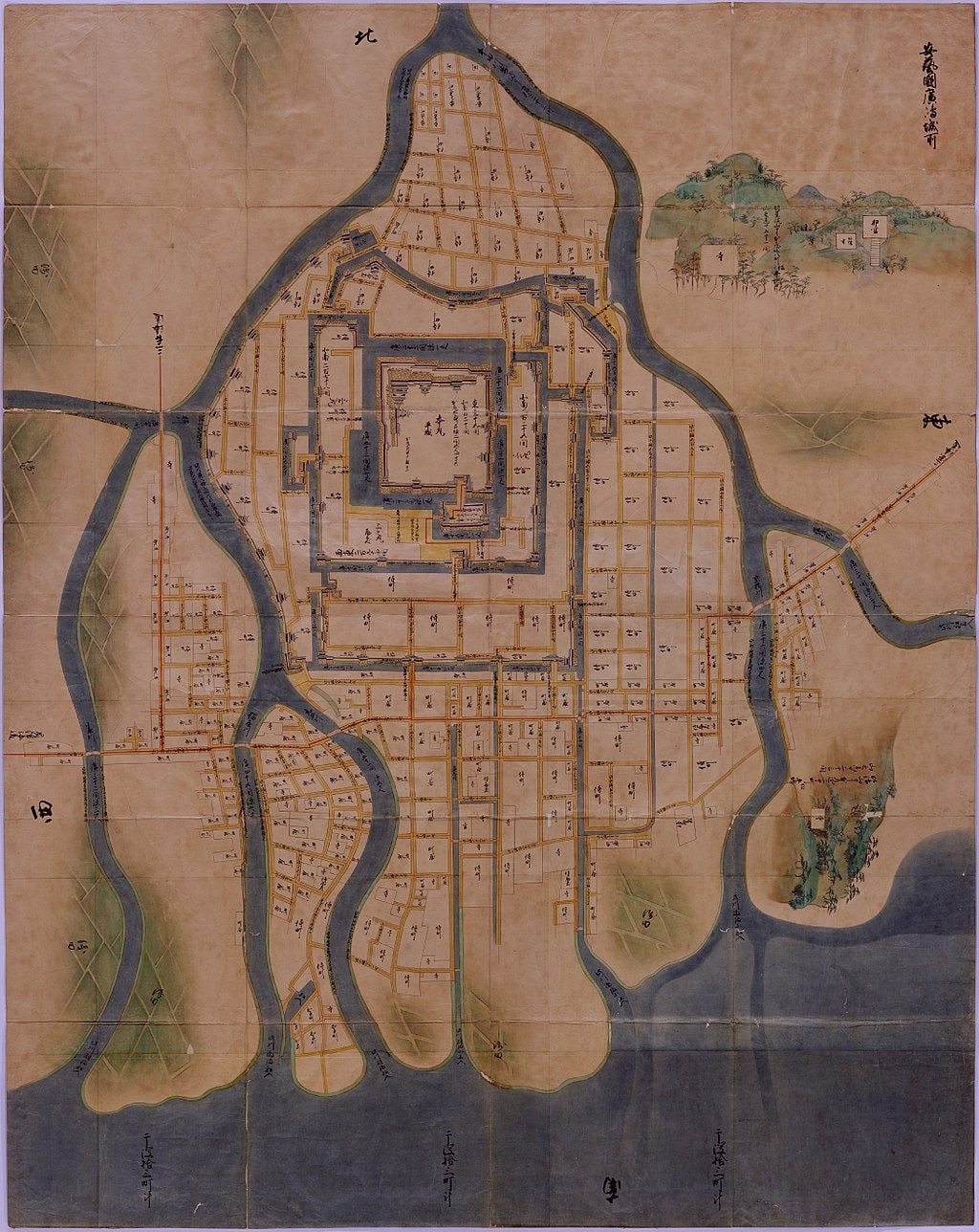
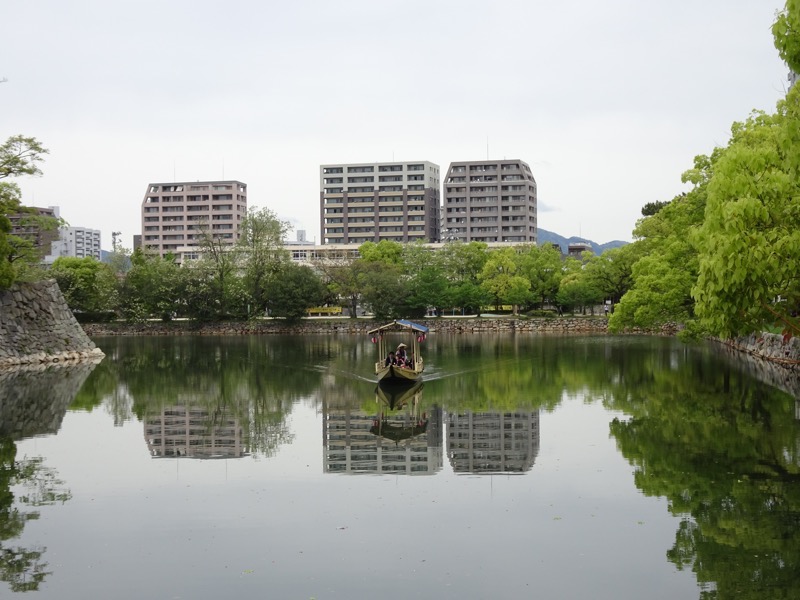
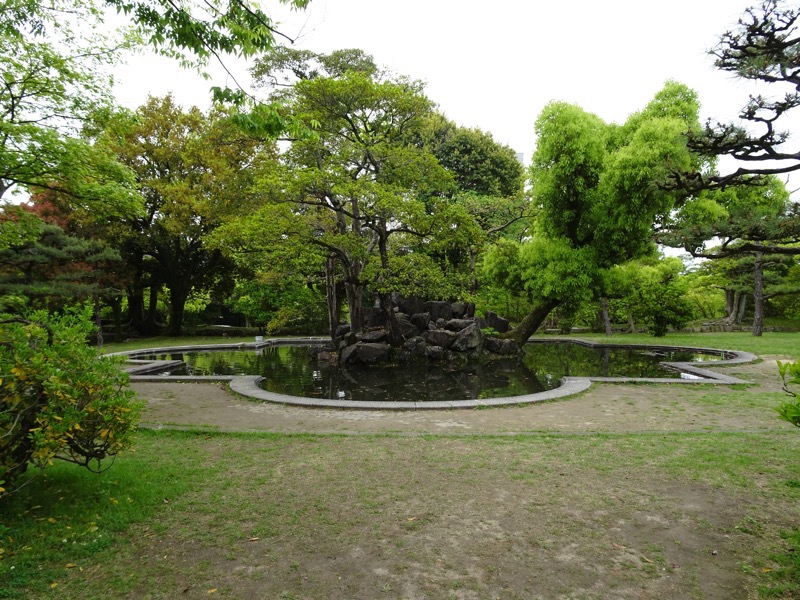
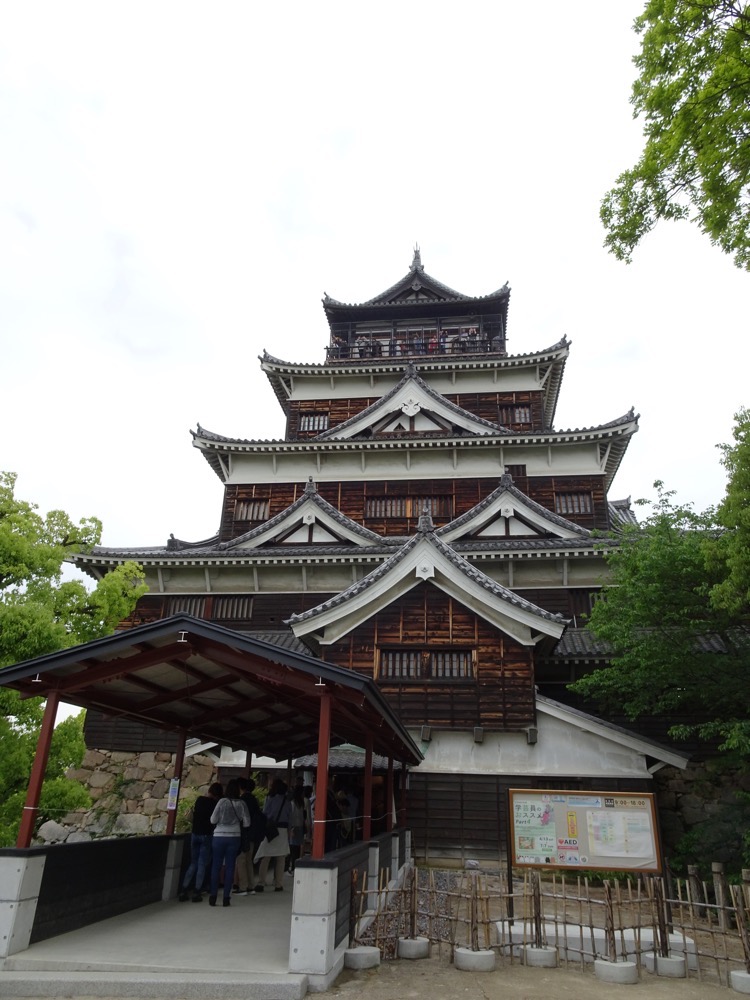
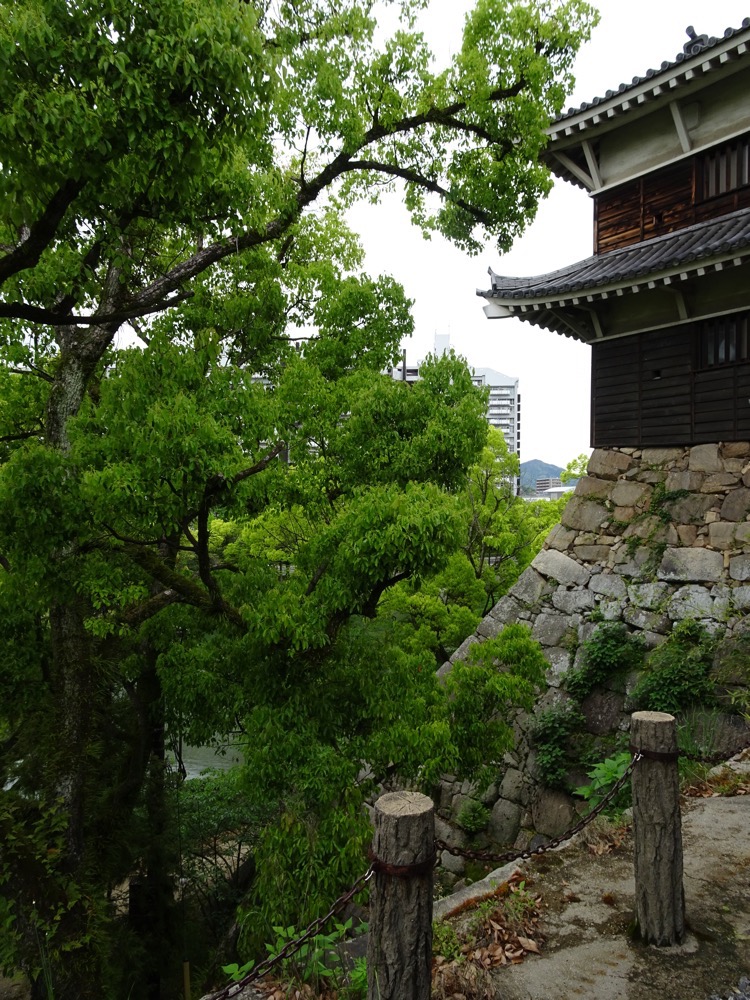 The Castle houses an extensive collection of pre-Reformation era displays – swords, armour, household objects and historical items, however, photography is prohibited and there is no English guidebooks, so I can not share most of what we saw inside.
The Castle houses an extensive collection of pre-Reformation era displays – swords, armour, household objects and historical items, however, photography is prohibited and there is no English guidebooks, so I can not share most of what we saw inside.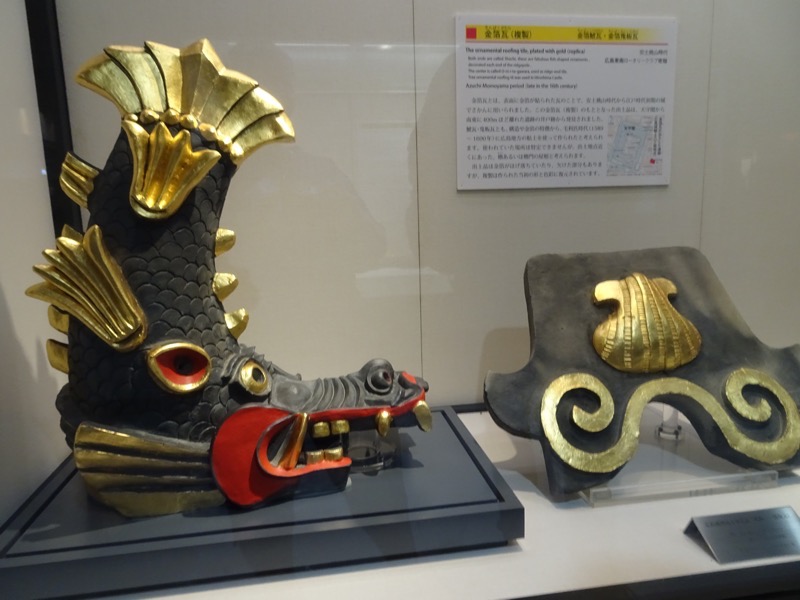
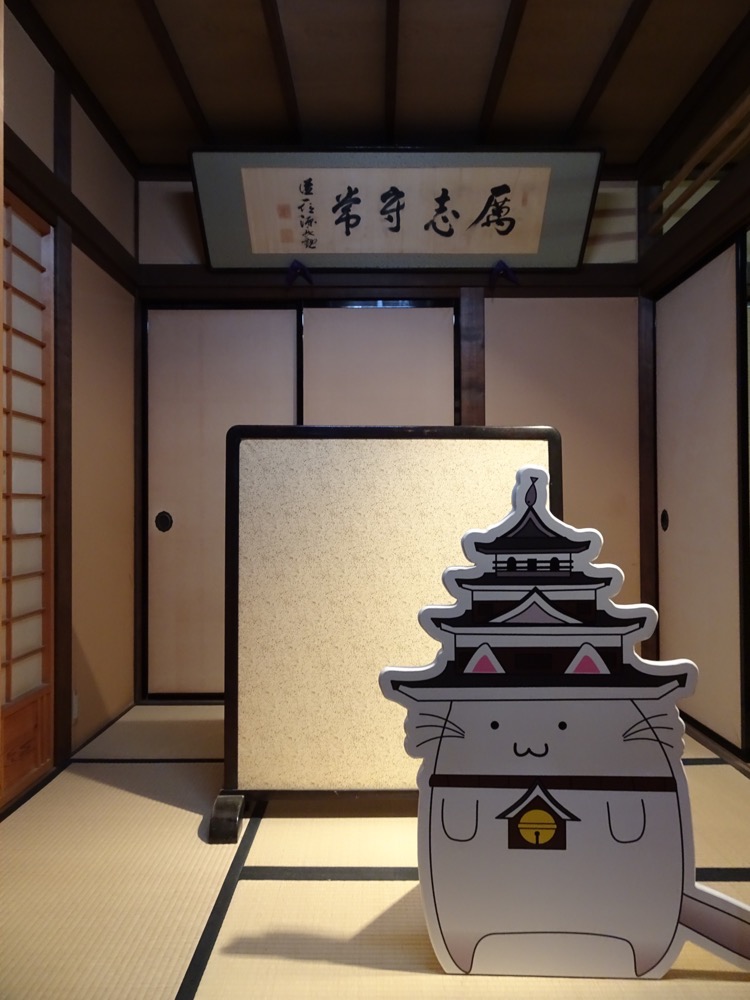 Some reconstructed rooms as they would have been in the late 1500s when the Mōri family ruled the castle.
Some reconstructed rooms as they would have been in the late 1500s when the Mōri family ruled the castle.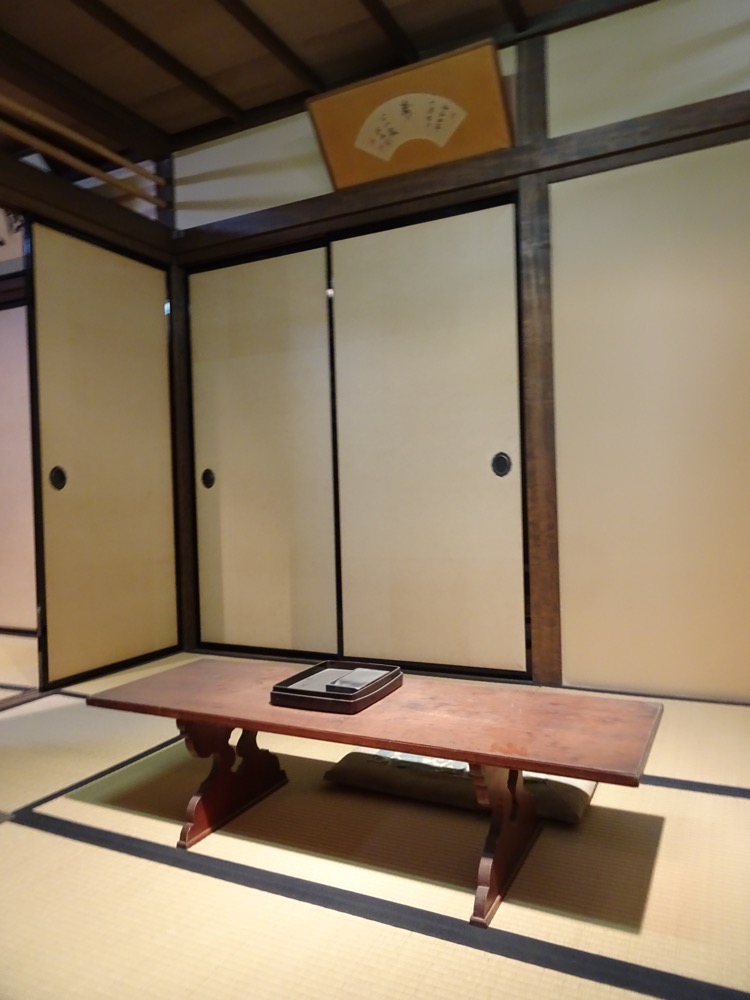
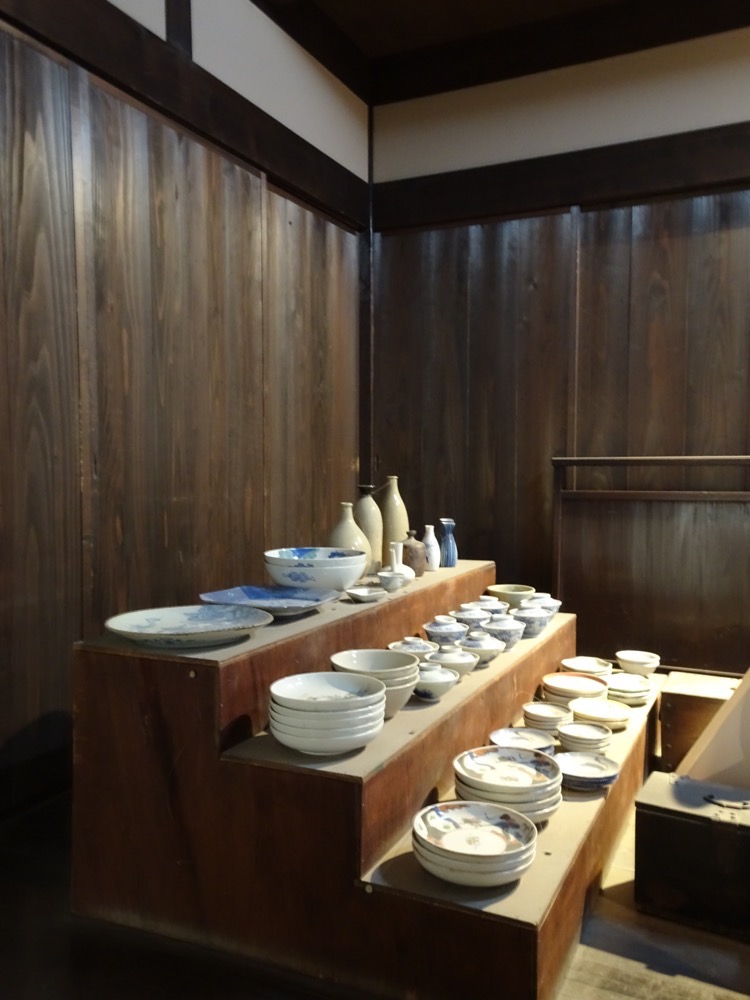
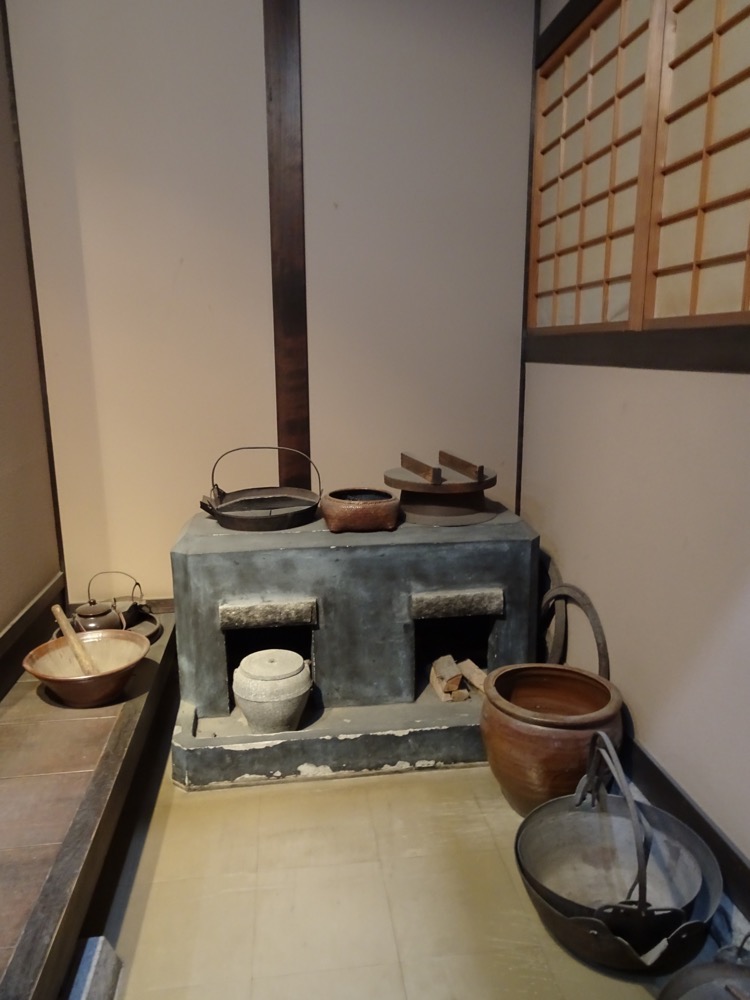 The views from the top of the castle are quite impressive – you can imagine how the advantage gained as the countryside was largely flat.
The views from the top of the castle are quite impressive – you can imagine how the advantage gained as the countryside was largely flat. 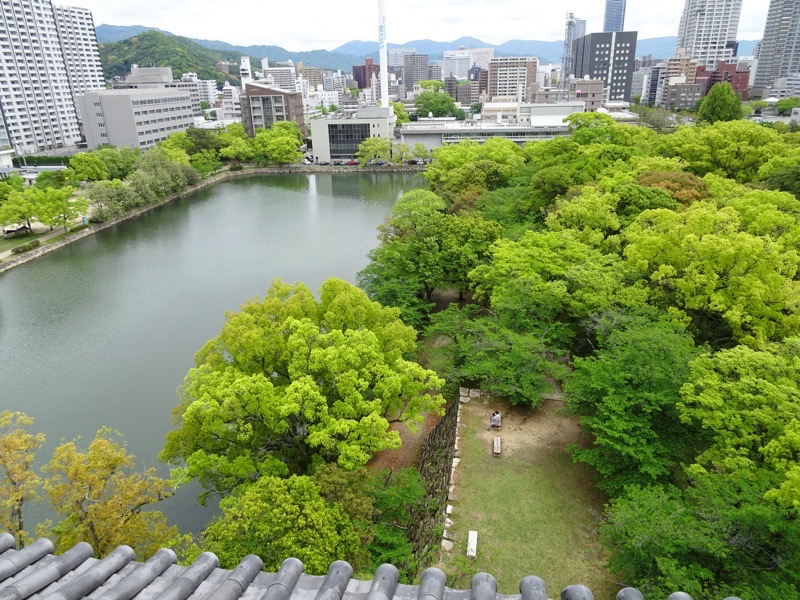
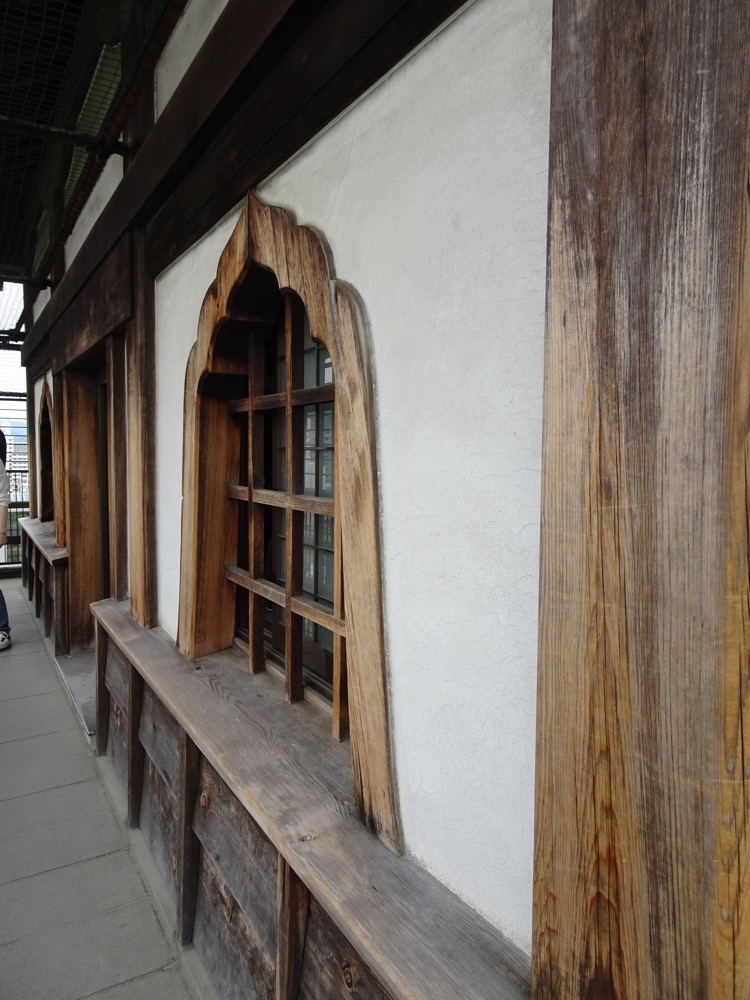
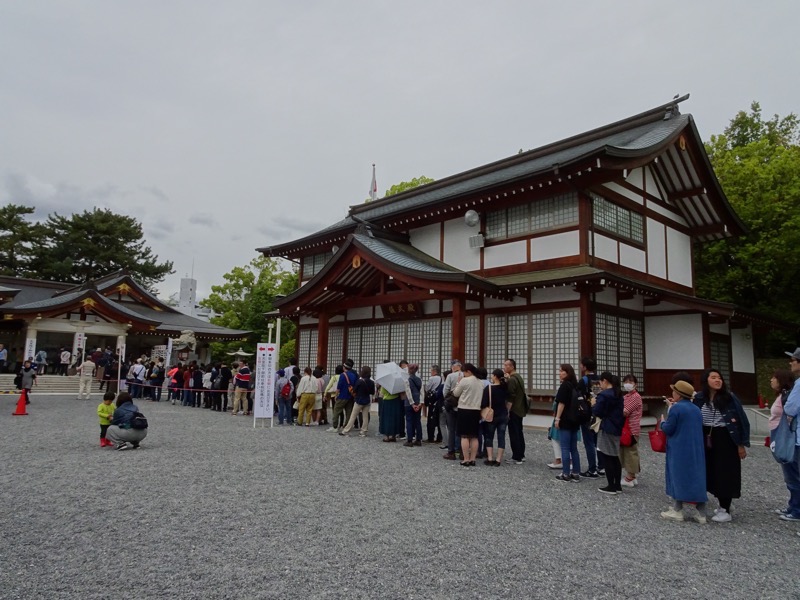
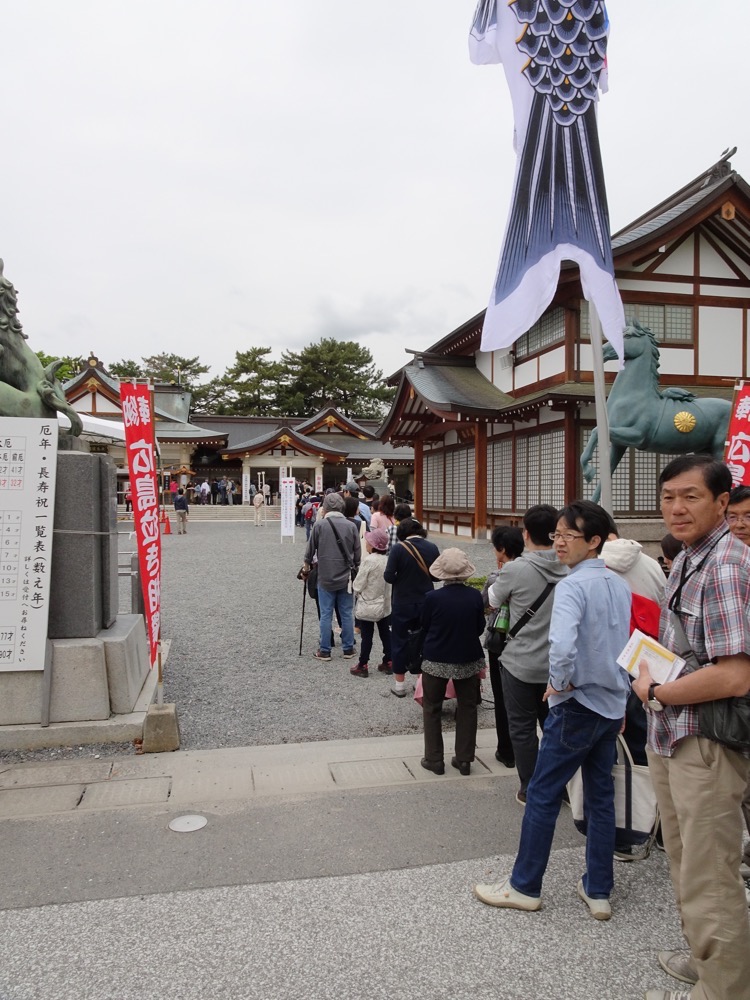 The queue to spend 30 seconds or some at the temple was inordinately long.
The queue to spend 30 seconds or some at the temple was inordinately long.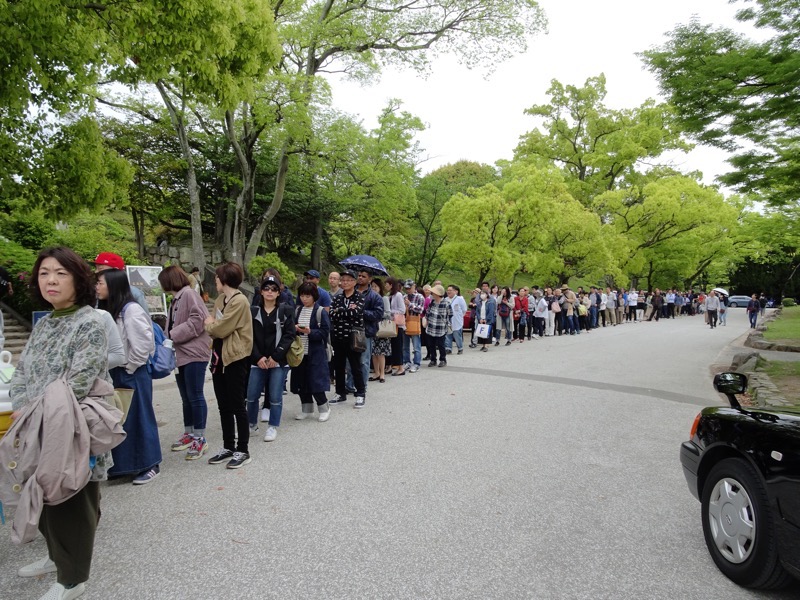 Then I saw this sign and realised it was actually something to do with crying babies… but it didn’t make a whole lot more sense.
Then I saw this sign and realised it was actually something to do with crying babies… but it didn’t make a whole lot more sense.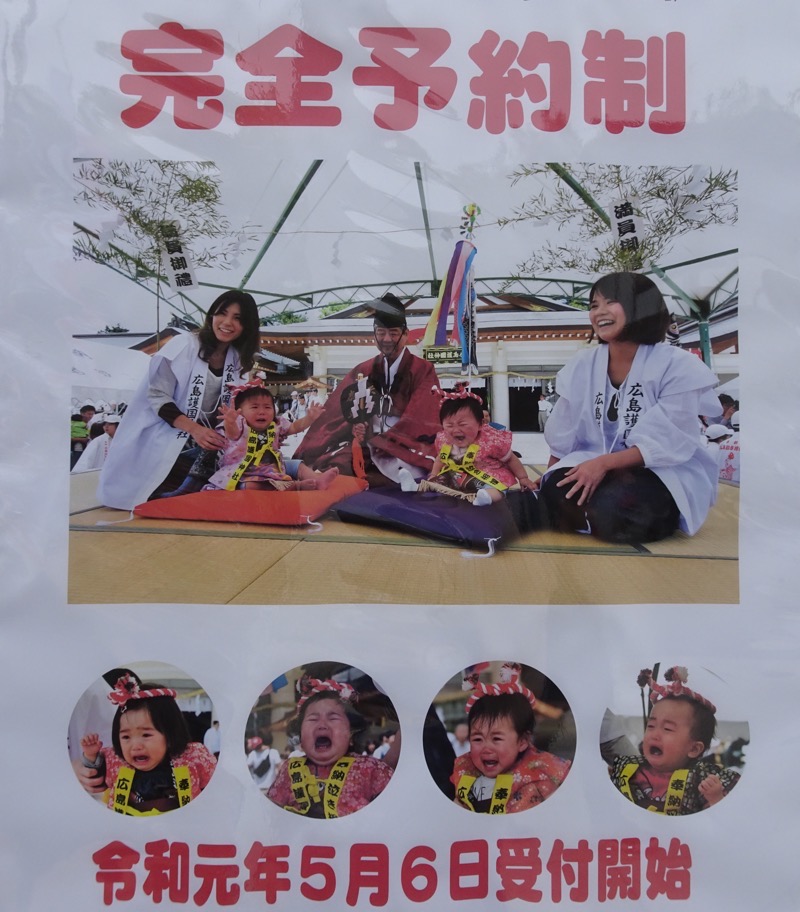 Eventually I found some information in English that read:
Eventually I found some information in English that read: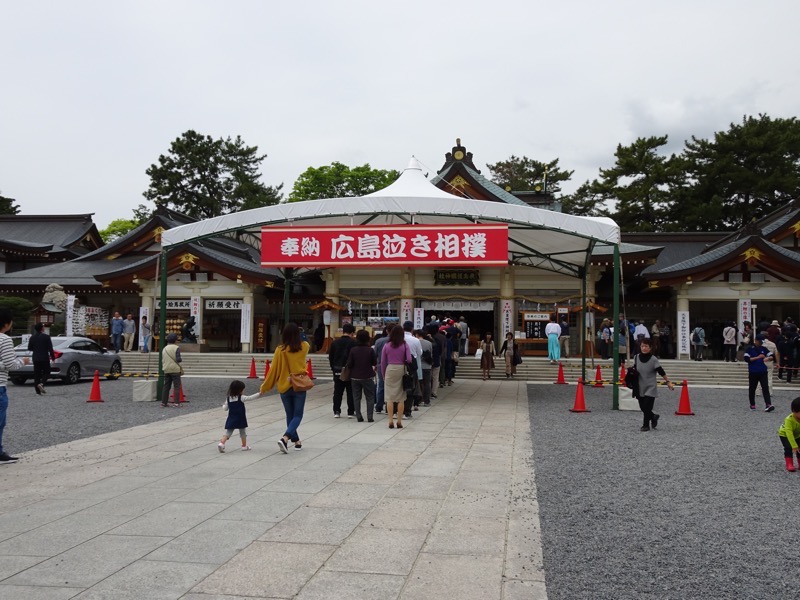 Here is where you can find the famous statue of a Carp Swimming up a Waterfall. Hiroshima castle is also often called Carp Castle. The statue symbolises the following types of good luck:
Here is where you can find the famous statue of a Carp Swimming up a Waterfall. Hiroshima castle is also often called Carp Castle. The statue symbolises the following types of good luck: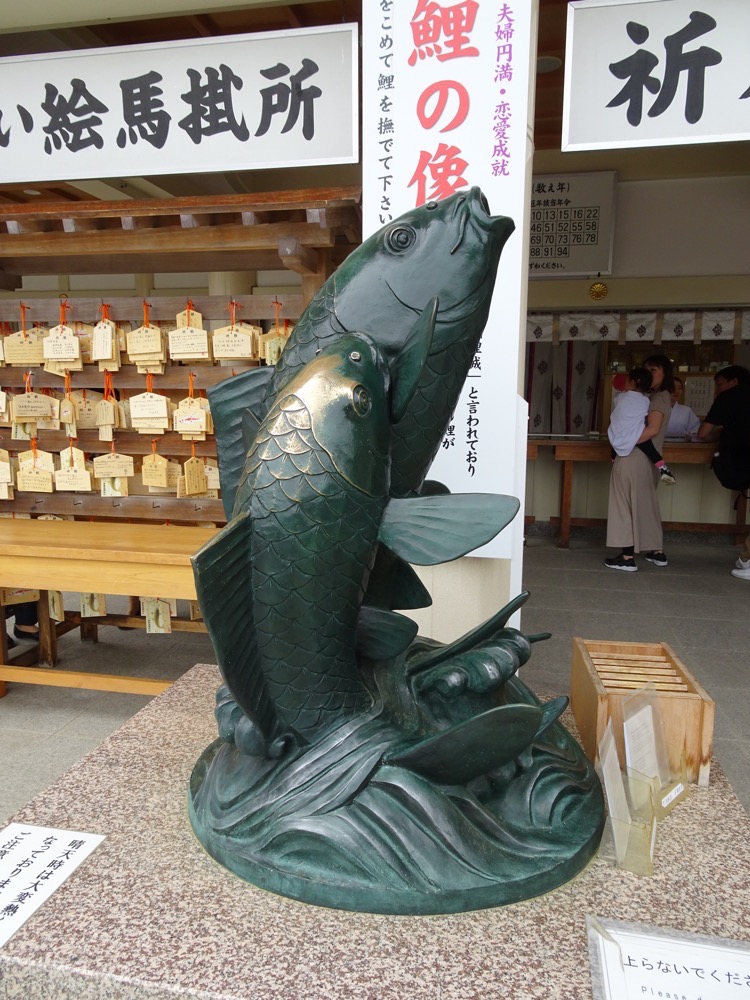 Votive plaques where visitors have written out their wishes for the future after visiting the shrine.
Votive plaques where visitors have written out their wishes for the future after visiting the shrine.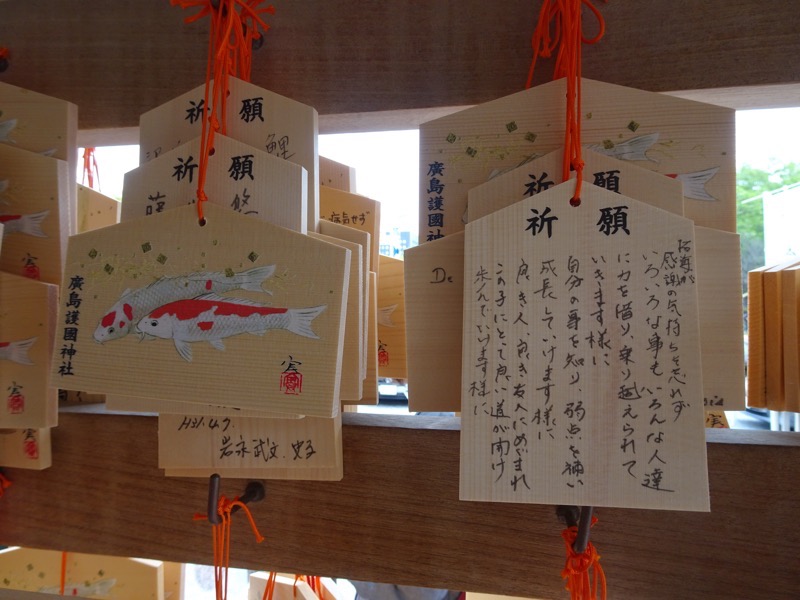
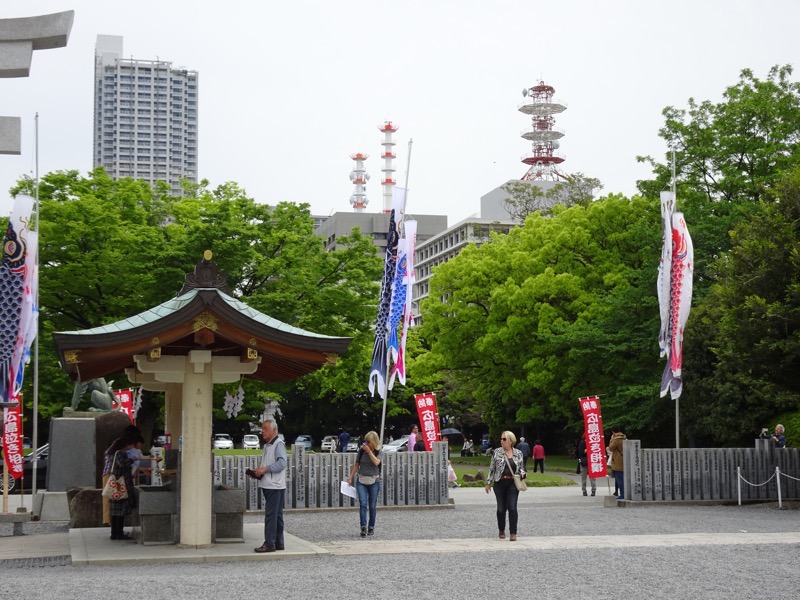
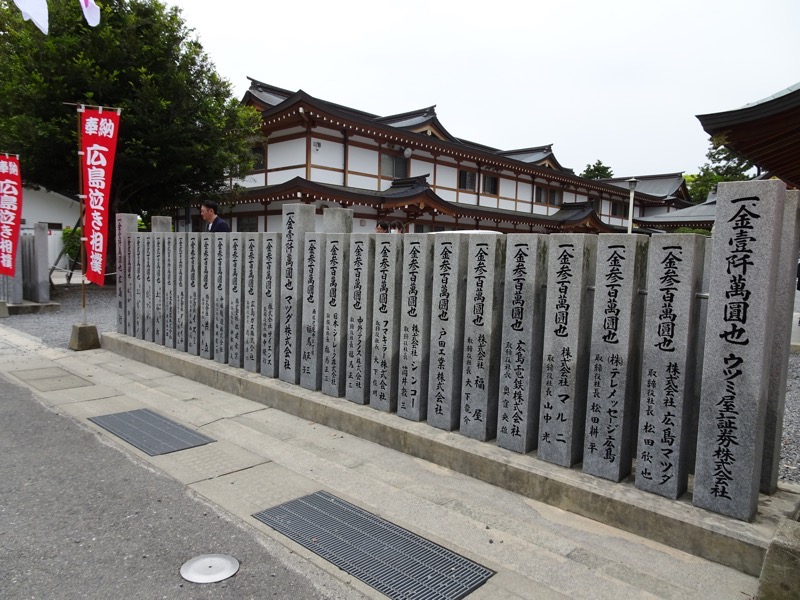 Close by is one of four known ‘atomic trees’, this one a pussy willow that survived the atomic blast in 1945. It is located 740m from the epicentre of the blast. It is quite remarkable that any trees remained given the buildings were completely flattened.
Close by is one of four known ‘atomic trees’, this one a pussy willow that survived the atomic blast in 1945. It is located 740m from the epicentre of the blast. It is quite remarkable that any trees remained given the buildings were completely flattened.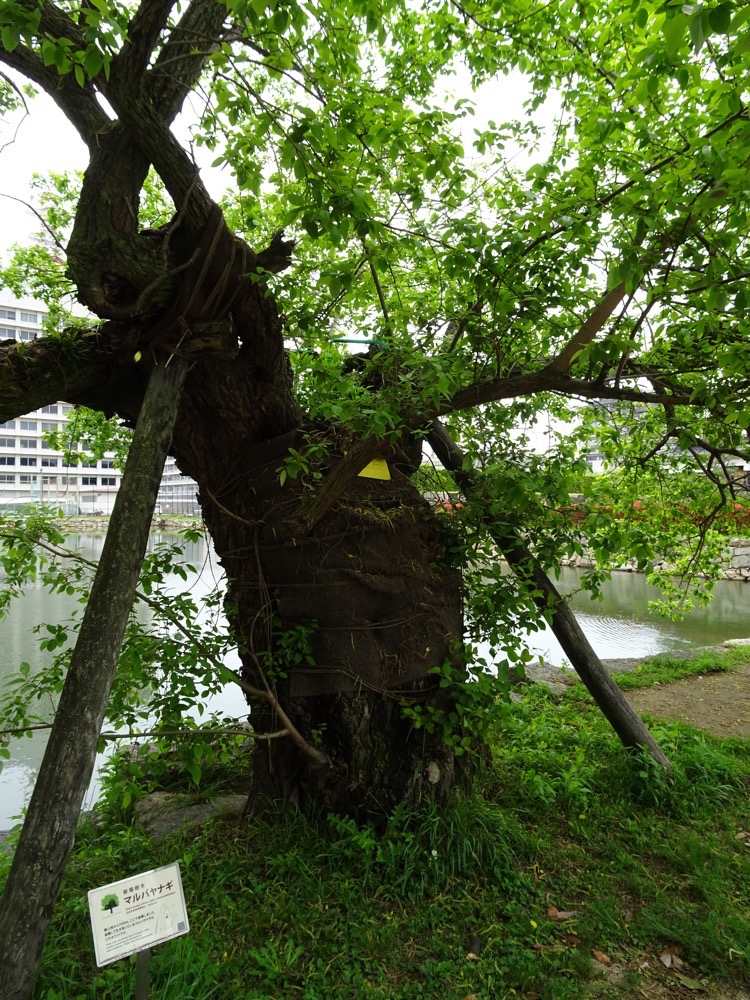 The castle complex directly after the atomic bomb was dropped on August 6th, 1945… image (in a rather circuitous route) via the United States National Archives via japanairraids.org
The castle complex directly after the atomic bomb was dropped on August 6th, 1945… image (in a rather circuitous route) via the United States National Archives via japanairraids.org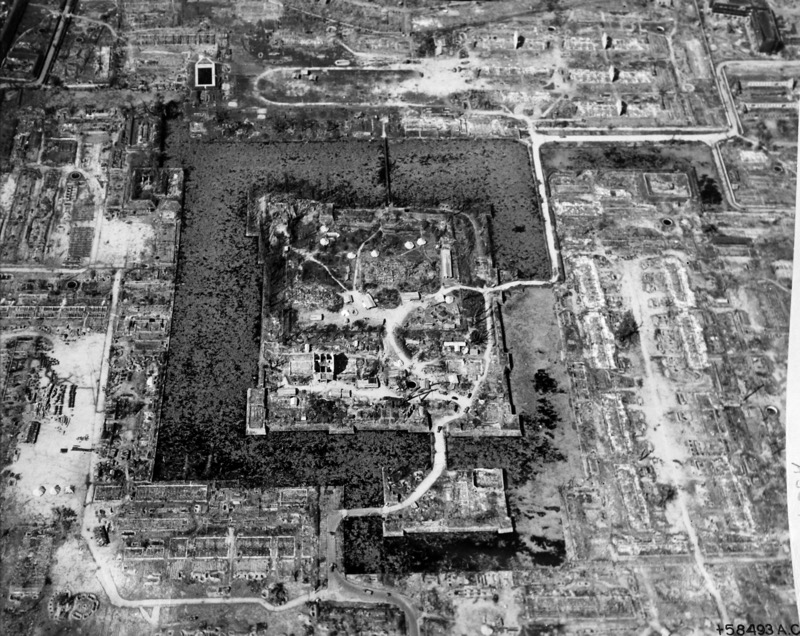 The outer keeps.
The outer keeps.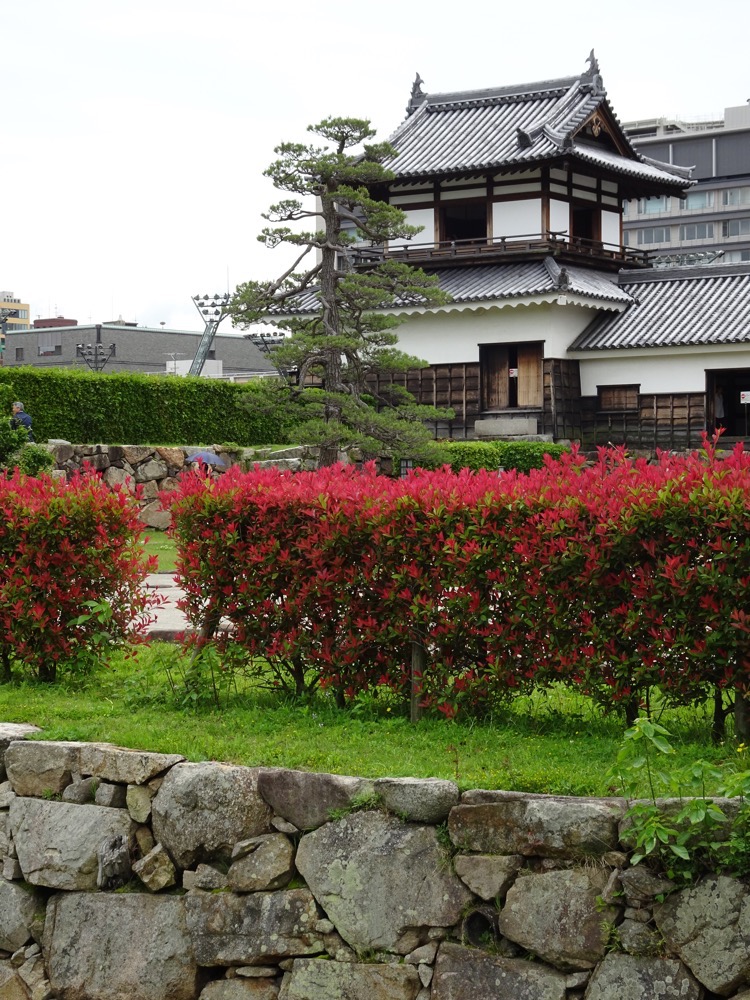
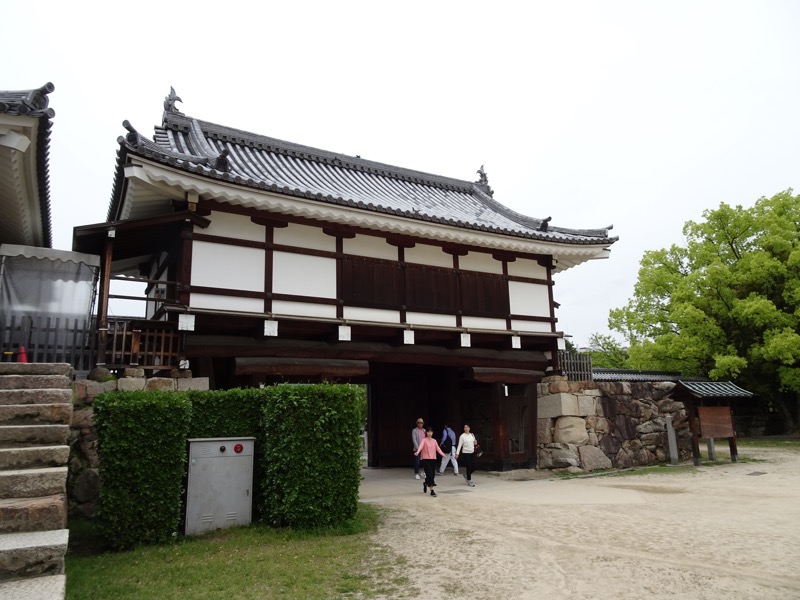
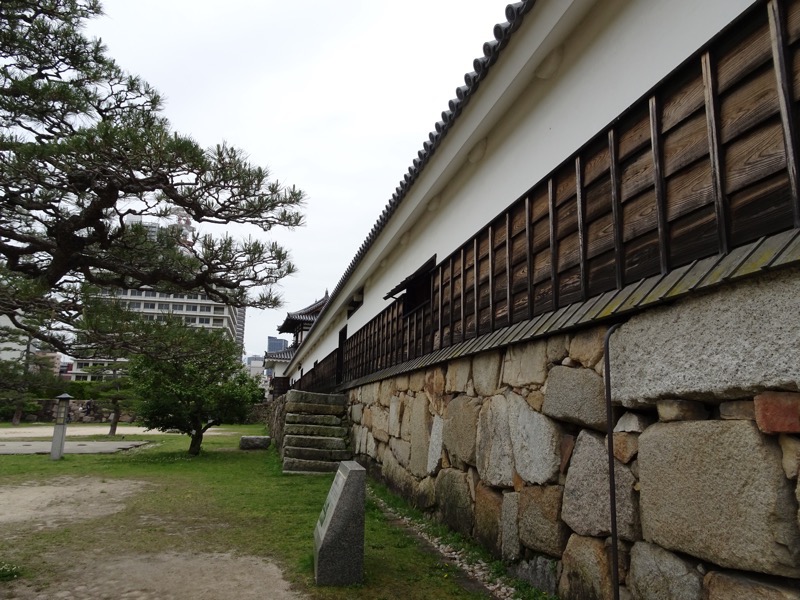
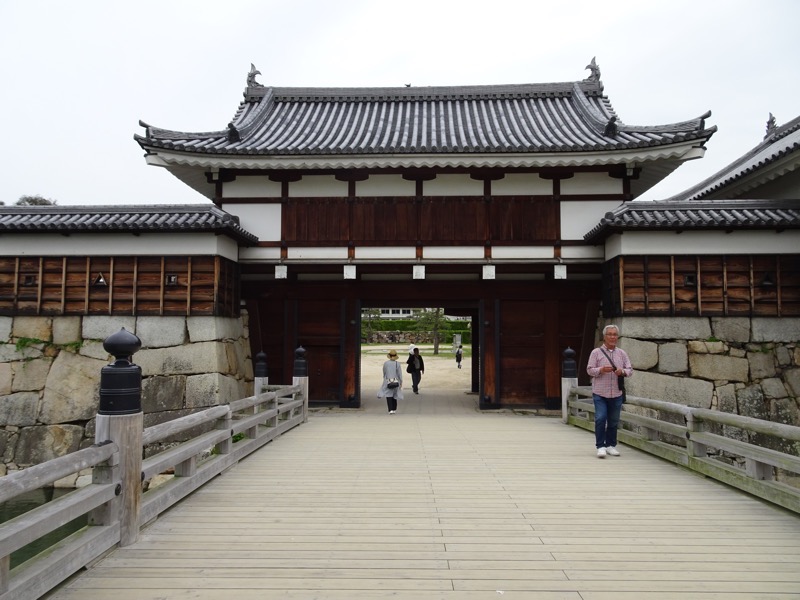
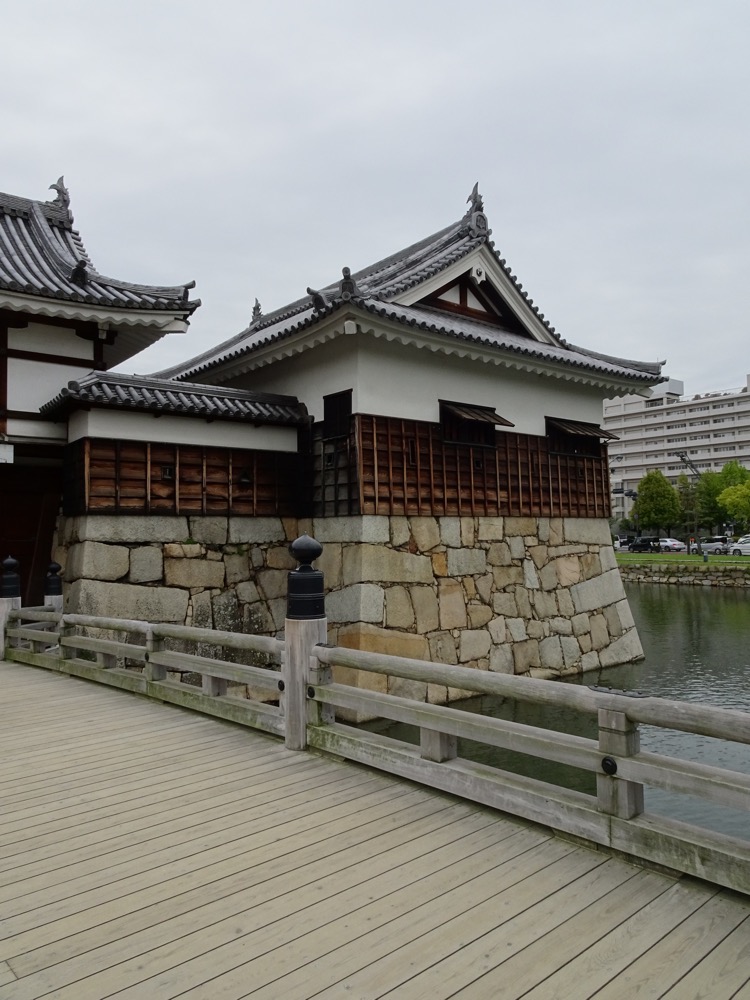
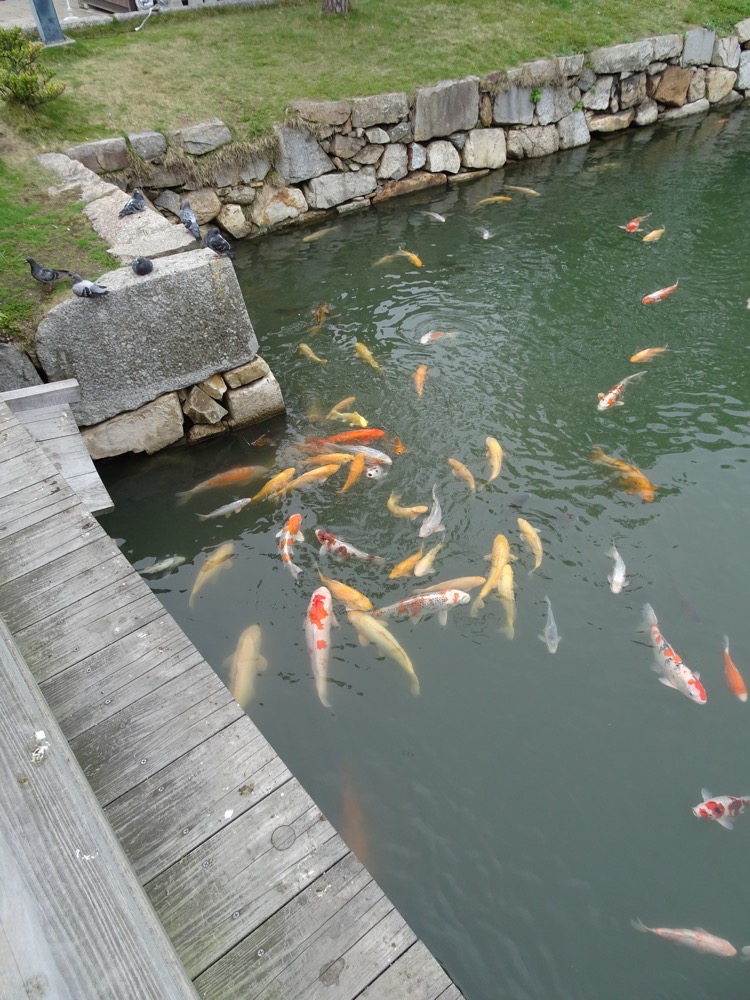 After we left the Castle complex we stopped momentarily at the Hiroshima Museum of Art, and were contemplating going in, but it turns out this museum was full of European artworks, so we merely stopped for a cup of Elderflower soda and some sake cake before moving on.
After we left the Castle complex we stopped momentarily at the Hiroshima Museum of Art, and were contemplating going in, but it turns out this museum was full of European artworks, so we merely stopped for a cup of Elderflower soda and some sake cake before moving on.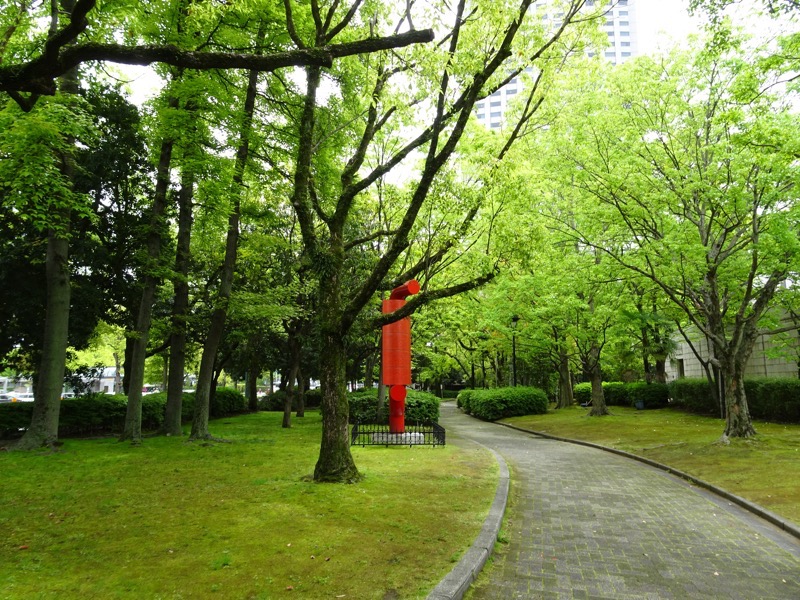
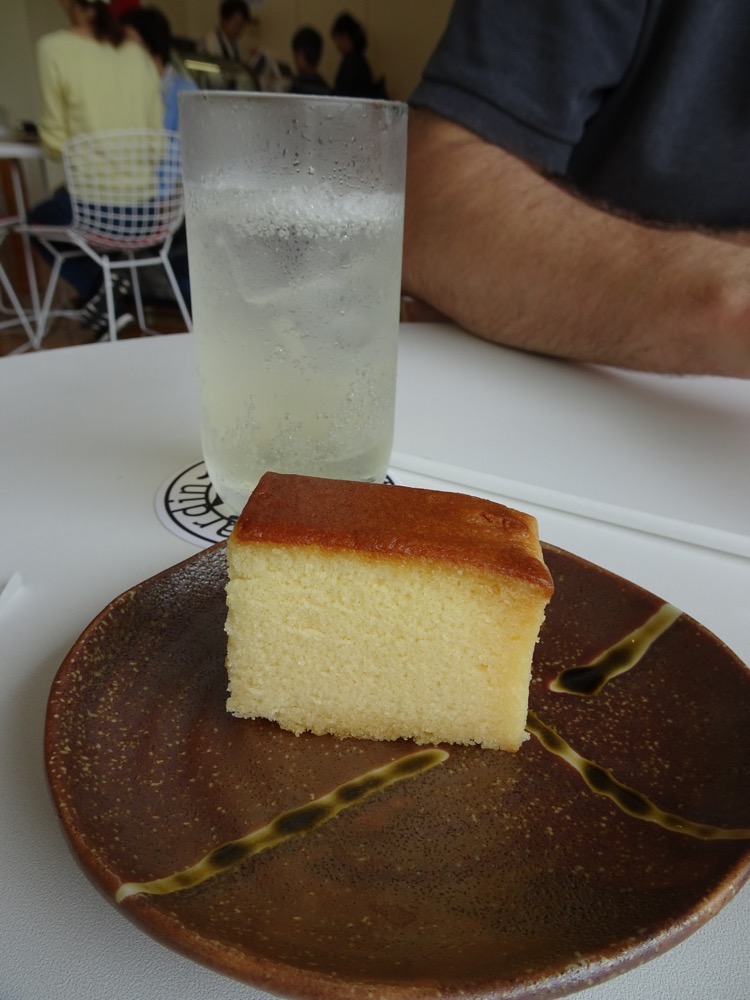
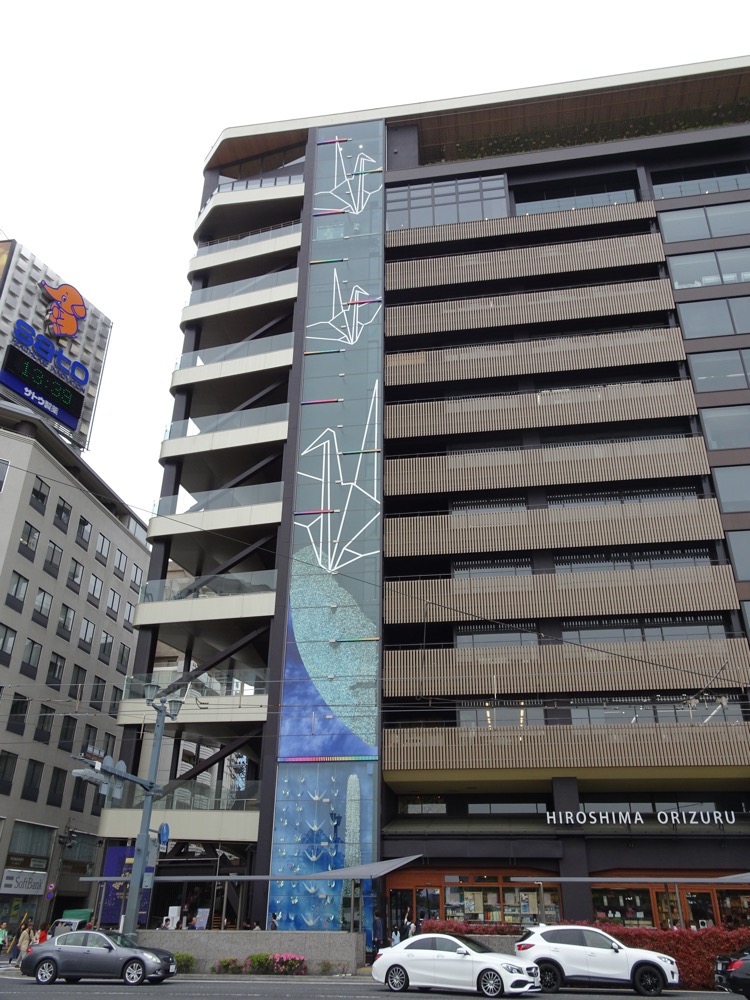
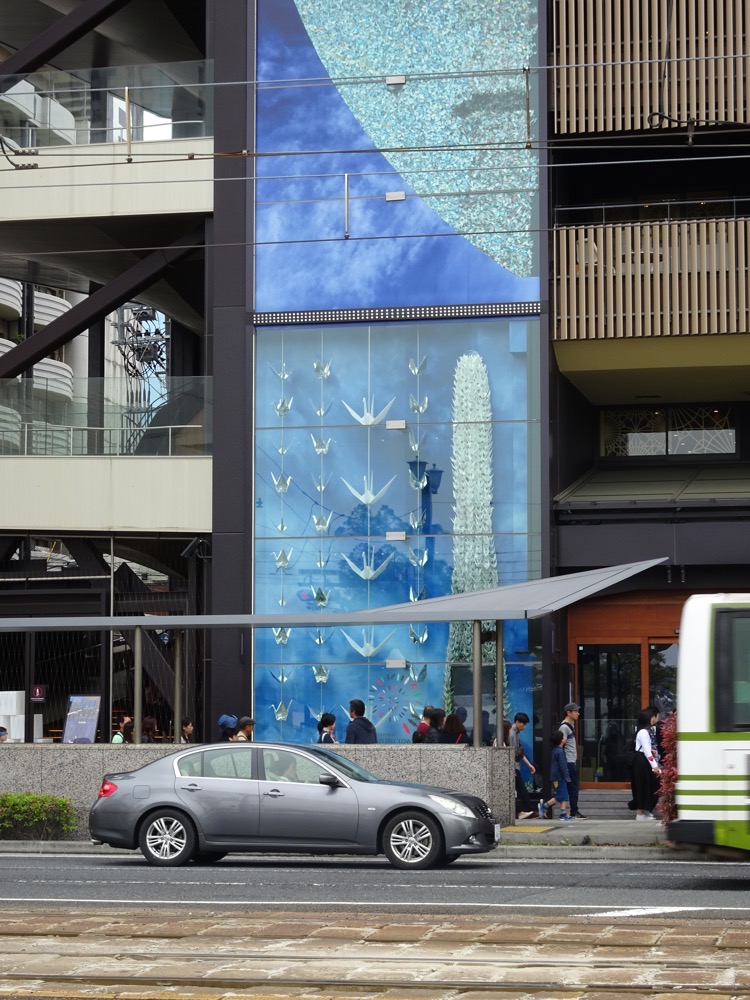
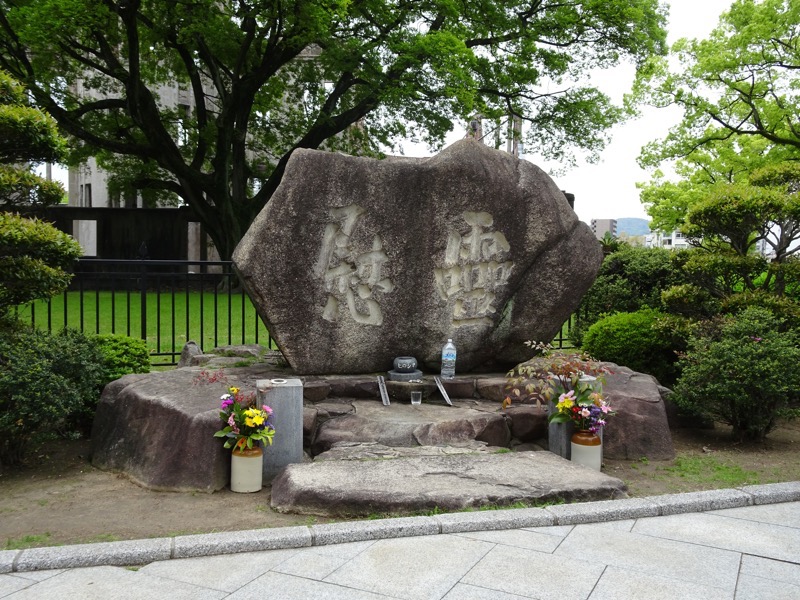 The Hiroshima Peace Memorial was originally the Hiroshima Prefectural Industrial Promotion Hall, and now commonly is more commonly known as the Genbaku Dome or the Atomic Bomb Dome. It is part of the Hiroshima Peace Memorial Park which was designated a UNESCO World Heritage Site in 1996. The ruin of the hall is a standing reminder to visitors of the people who were killed here in the atomic bombing of Hiroshima which precipitated the end of WWII. Over 70,000 people are reported to have been killed immediately and an another estimated 70,000 suffered fatal injuries from the radiation fallout.
The Hiroshima Peace Memorial was originally the Hiroshima Prefectural Industrial Promotion Hall, and now commonly is more commonly known as the Genbaku Dome or the Atomic Bomb Dome. It is part of the Hiroshima Peace Memorial Park which was designated a UNESCO World Heritage Site in 1996. The ruin of the hall is a standing reminder to visitors of the people who were killed here in the atomic bombing of Hiroshima which precipitated the end of WWII. Over 70,000 people are reported to have been killed immediately and an another estimated 70,000 suffered fatal injuries from the radiation fallout.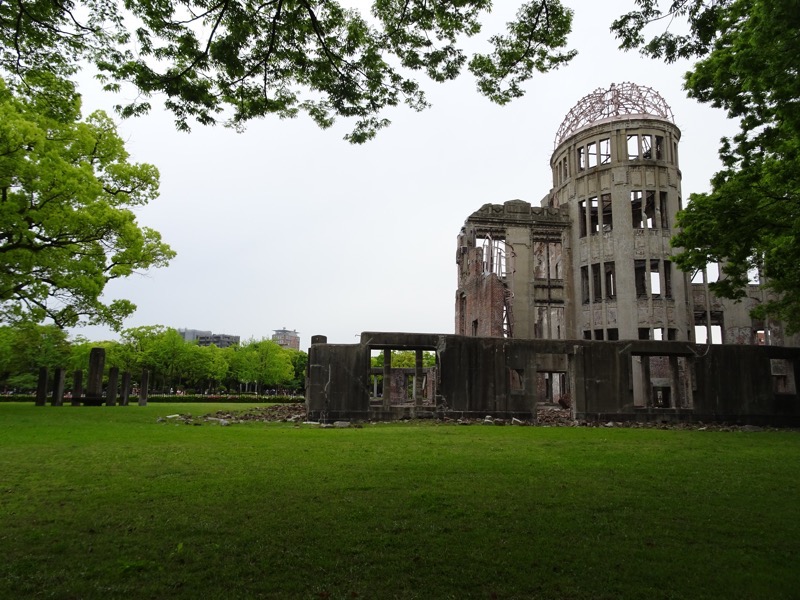
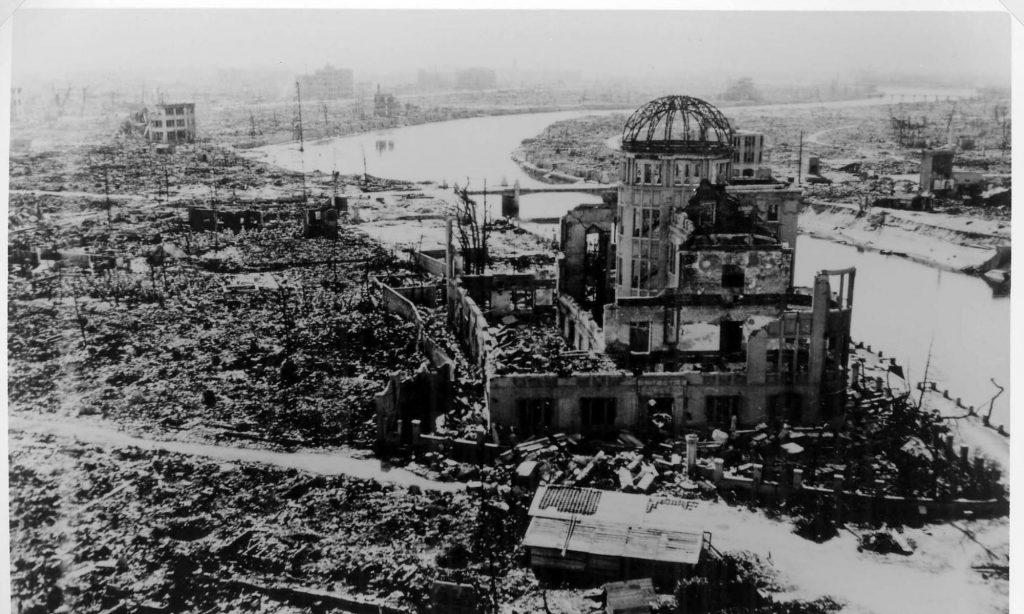
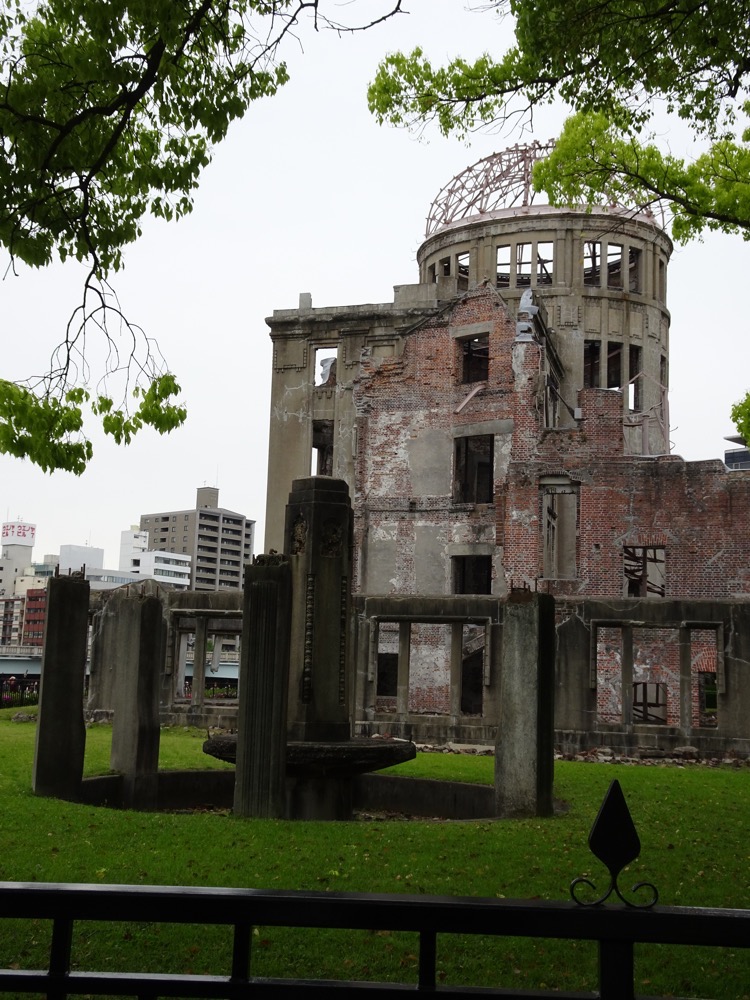 This small monument beside an ordinary apartment building marks the epicentre of the blast. The bomb was detonated 600m above the ground and the ensuing blast saw temperatures of 3000-4000C at ground level.
This small monument beside an ordinary apartment building marks the epicentre of the blast. The bomb was detonated 600m above the ground and the ensuing blast saw temperatures of 3000-4000C at ground level. 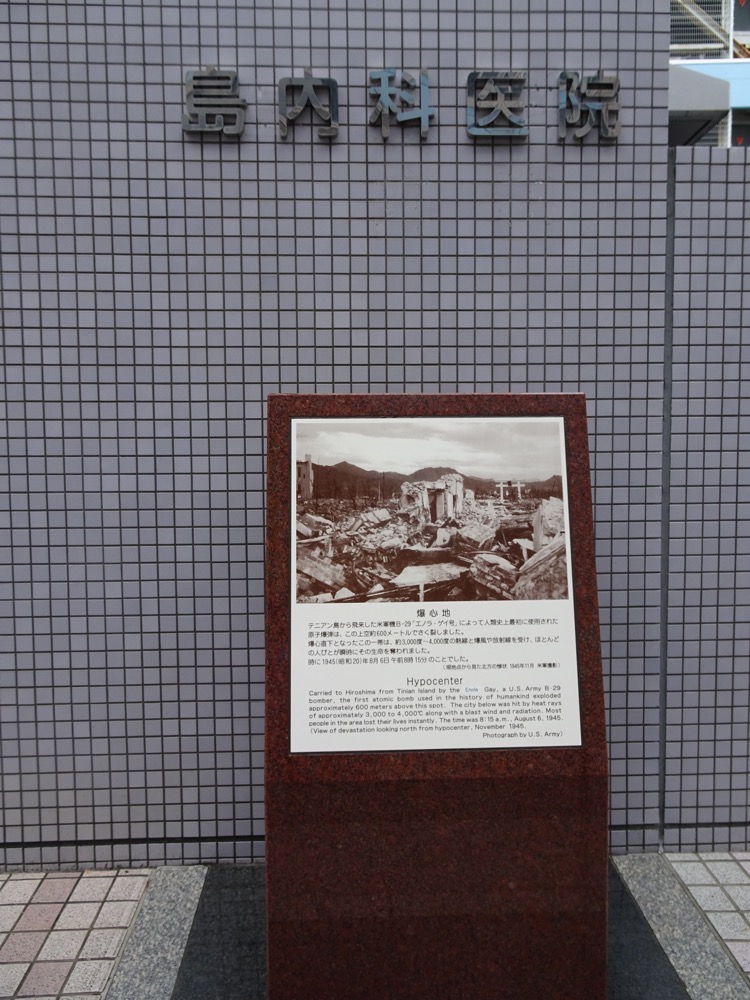 The Hiroshima bombing on 6th August 1945 which killed 70,000 did not see Japan immediately surrender their position in the war, causing the US forces to drop more atomic bombs in Nagasaki (where the Mitsubishi shipbuilding yards were located) on 9th August 1945 which killed up to an estimated 246,000 people, at which point Japan capitulated.
The Hiroshima bombing on 6th August 1945 which killed 70,000 did not see Japan immediately surrender their position in the war, causing the US forces to drop more atomic bombs in Nagasaki (where the Mitsubishi shipbuilding yards were located) on 9th August 1945 which killed up to an estimated 246,000 people, at which point Japan capitulated.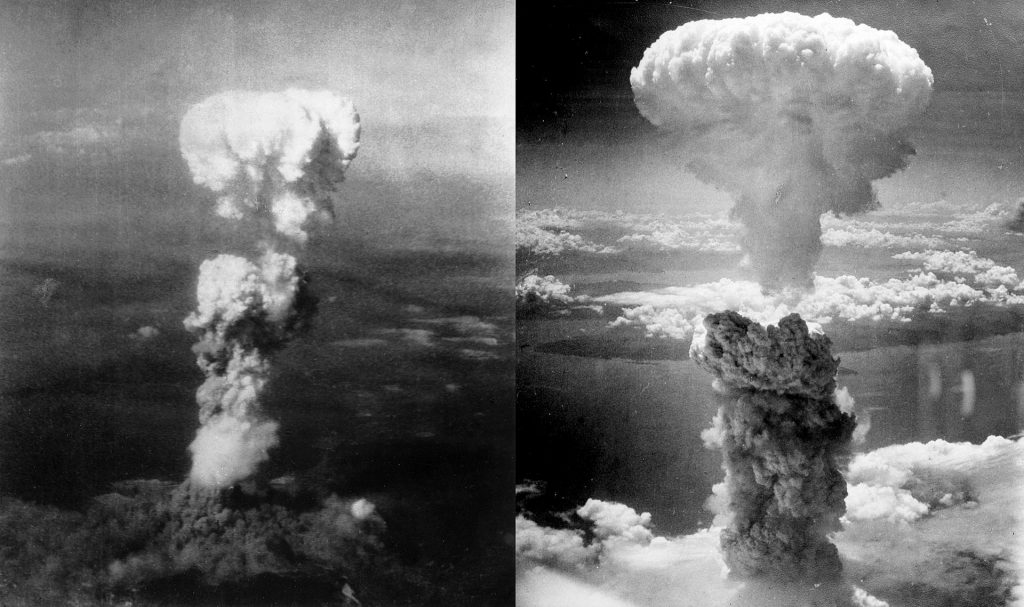 Two aerial photos of atomic bomb mushroom clouds, over Hiroshima (left) and Nagasaki (right) in 1945.
Two aerial photos of atomic bomb mushroom clouds, over Hiroshima (left) and Nagasaki (right) in 1945.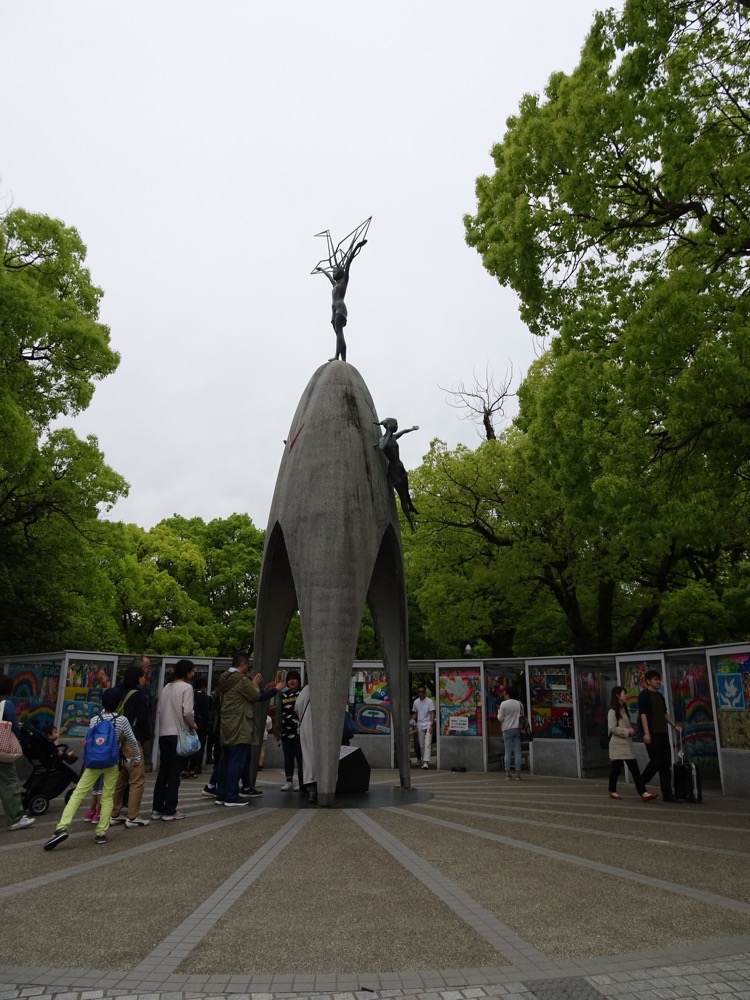 Children from all over Japan engage in making origami peace cranes and sending them to Nagasaki and Hiroshima. It is a mission/endeavour designed to remind people of the necessity for peace and to commemorate the loss of life in WWII.
Children from all over Japan engage in making origami peace cranes and sending them to Nagasaki and Hiroshima. It is a mission/endeavour designed to remind people of the necessity for peace and to commemorate the loss of life in WWII.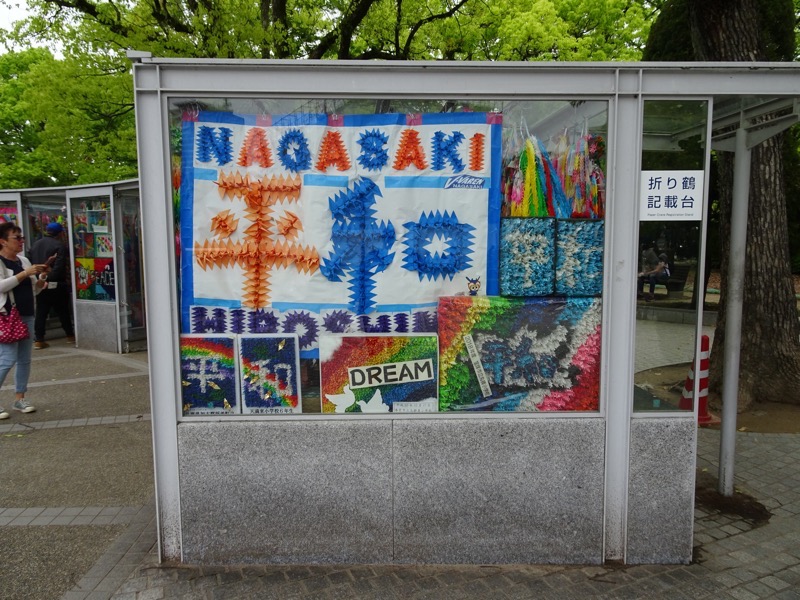
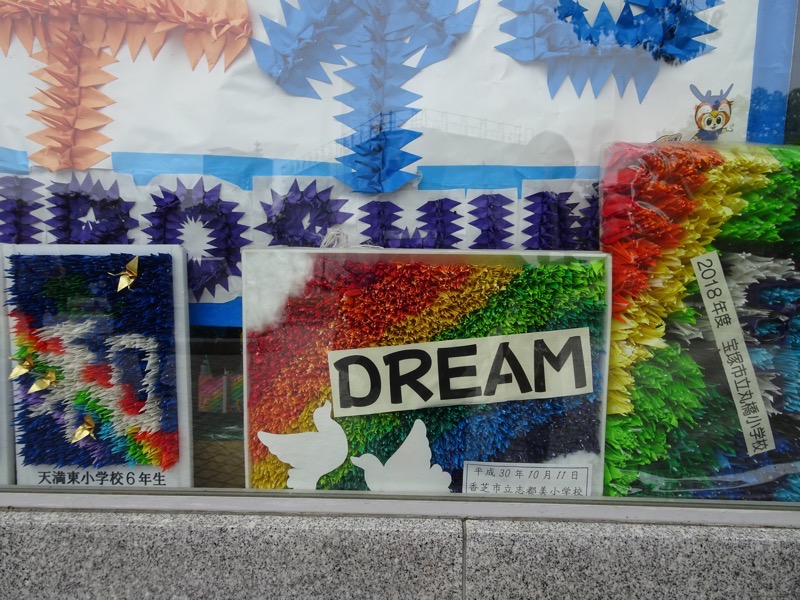
 Further down into the Peace Park is an eternal flame… not very visible in this image.
Further down into the Peace Park is an eternal flame… not very visible in this image.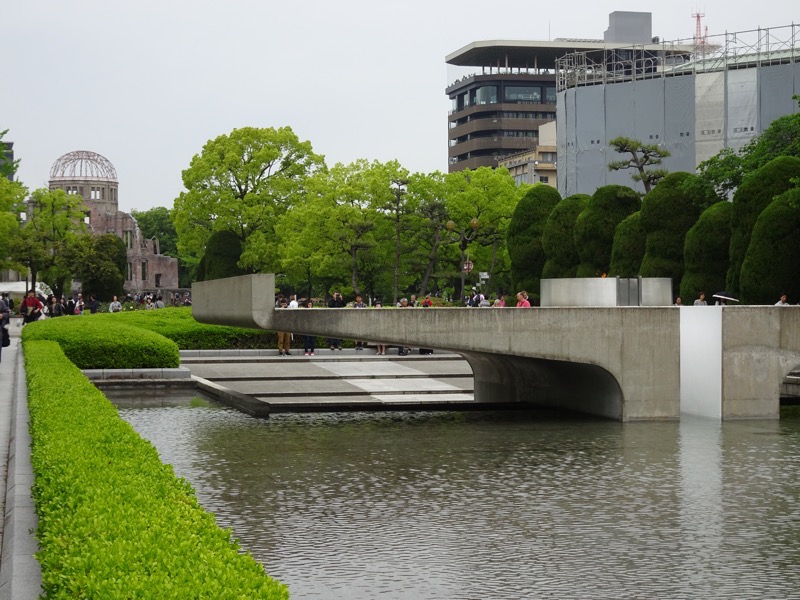
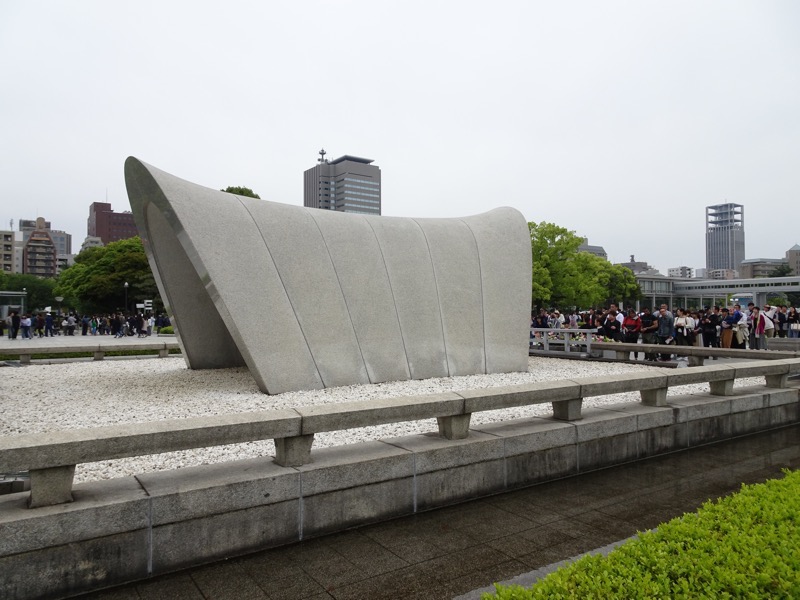
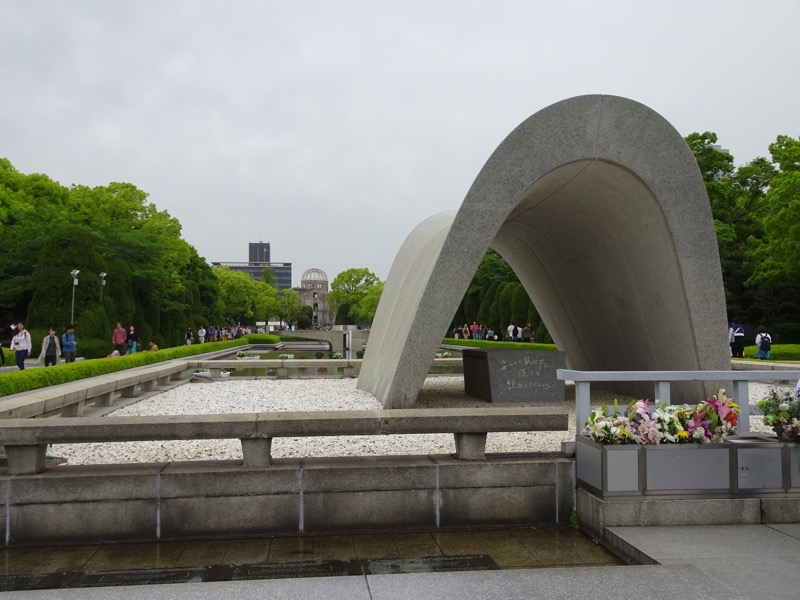
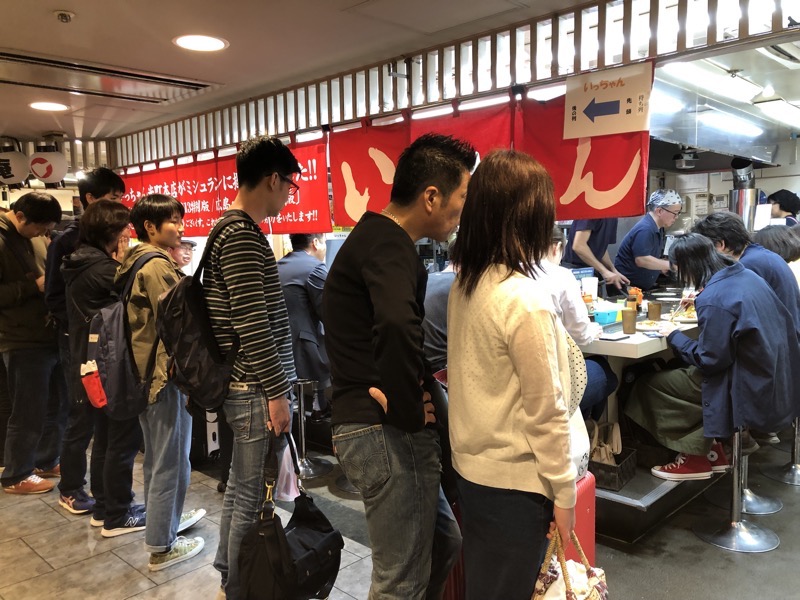

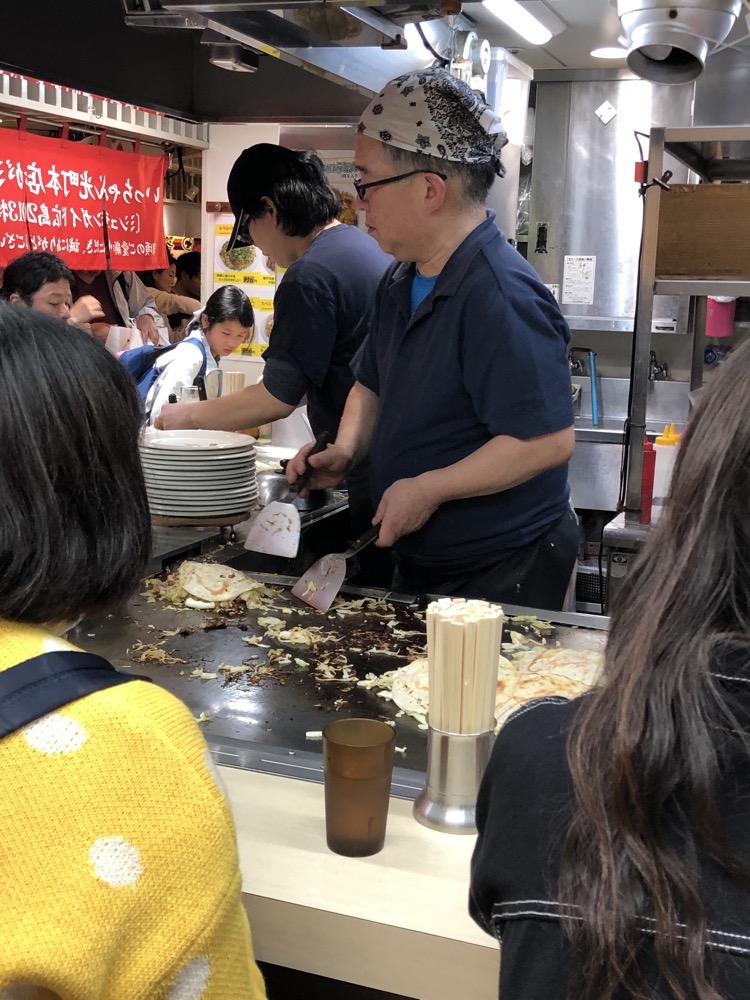 Shrimp and calamari Hiroshima style (soba noodles added) okonomiyaki. Very tasty and very filling. I couldn’t finish it, which no doubt pleased Mr K enormously.
Shrimp and calamari Hiroshima style (soba noodles added) okonomiyaki. Very tasty and very filling. I couldn’t finish it, which no doubt pleased Mr K enormously. While waiting in line at the 7/11 to buy some sake for the train ride, I saw this… Jump onto xe.com and check out the exchange rate, and weep a little. These are shitty convenience store at the train station prices too! We pay so much tax on alcohol in Australia.
While waiting in line at the 7/11 to buy some sake for the train ride, I saw this… Jump onto xe.com and check out the exchange rate, and weep a little. These are shitty convenience store at the train station prices too! We pay so much tax on alcohol in Australia.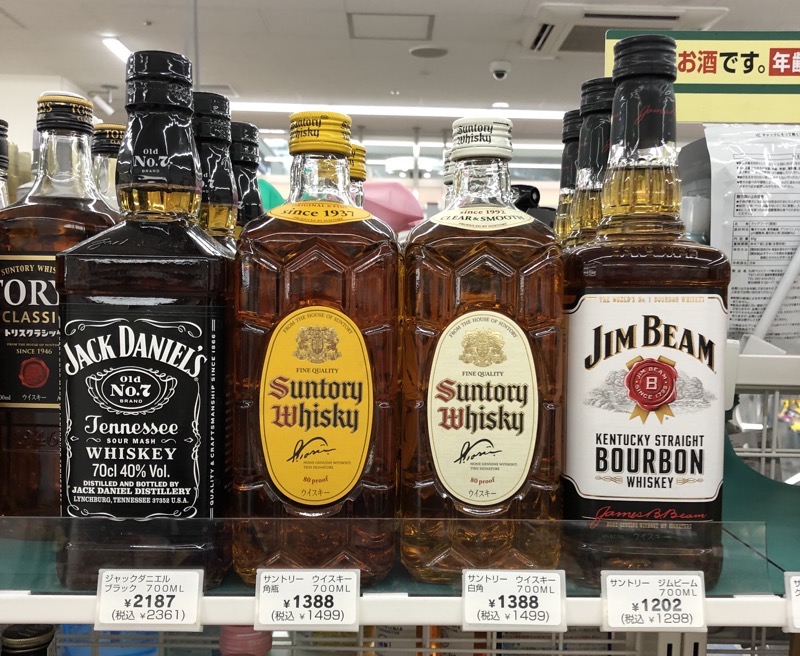 Also at the shopping centre near the train station – Hokkaido style cheese tarts with a local hint of Hiroshima lemony goodness! A special treat that I felt was well deserved after standing on the train this morning and walking over 12.5kms today on hard concrete pathways.
Also at the shopping centre near the train station – Hokkaido style cheese tarts with a local hint of Hiroshima lemony goodness! A special treat that I felt was well deserved after standing on the train this morning and walking over 12.5kms today on hard concrete pathways.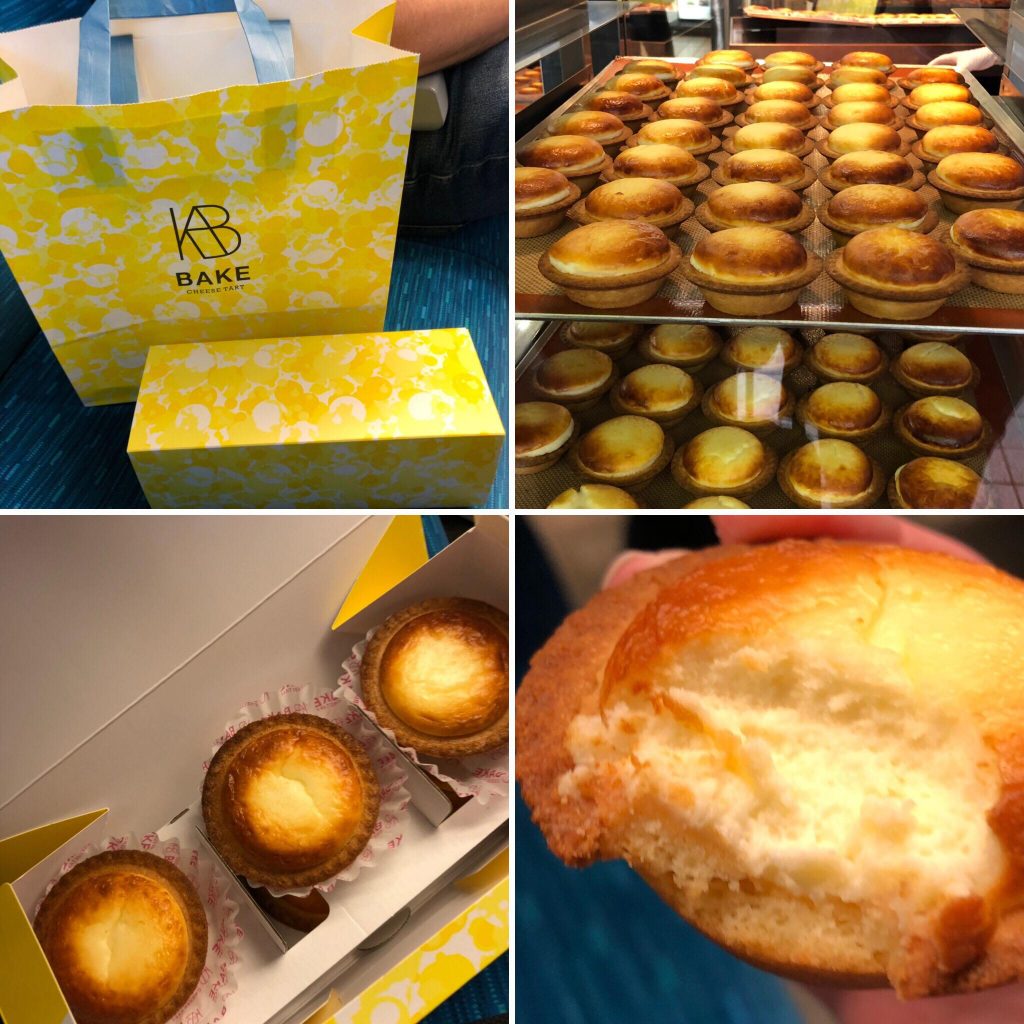 Then it was back onto the Shinkansen to head back to Osaka. We needed have worried about reserving me a seat, as it happens the trains heading back the other way were all largely empty, but I was eternally grateful that I had been carrying the knowledge around all day that I would not be tortured for hours by being forced to stand on the train ride back to Osaka.
Then it was back onto the Shinkansen to head back to Osaka. We needed have worried about reserving me a seat, as it happens the trains heading back the other way were all largely empty, but I was eternally grateful that I had been carrying the knowledge around all day that I would not be tortured for hours by being forced to stand on the train ride back to Osaka.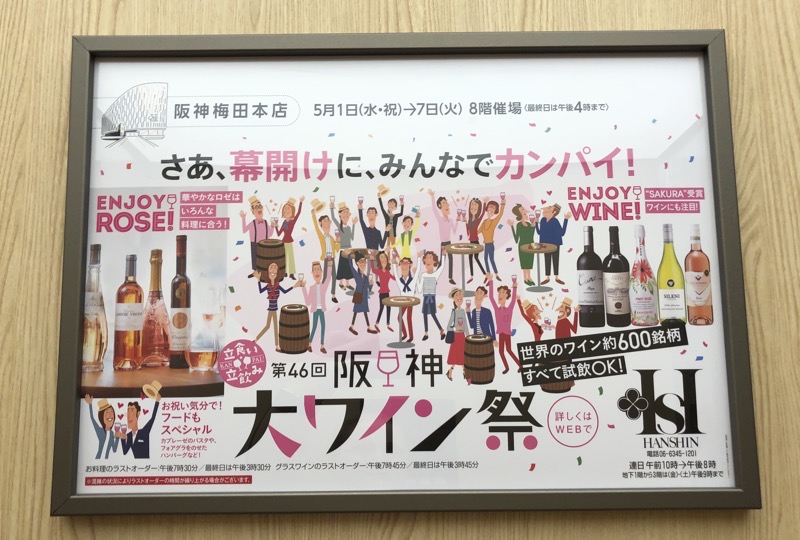
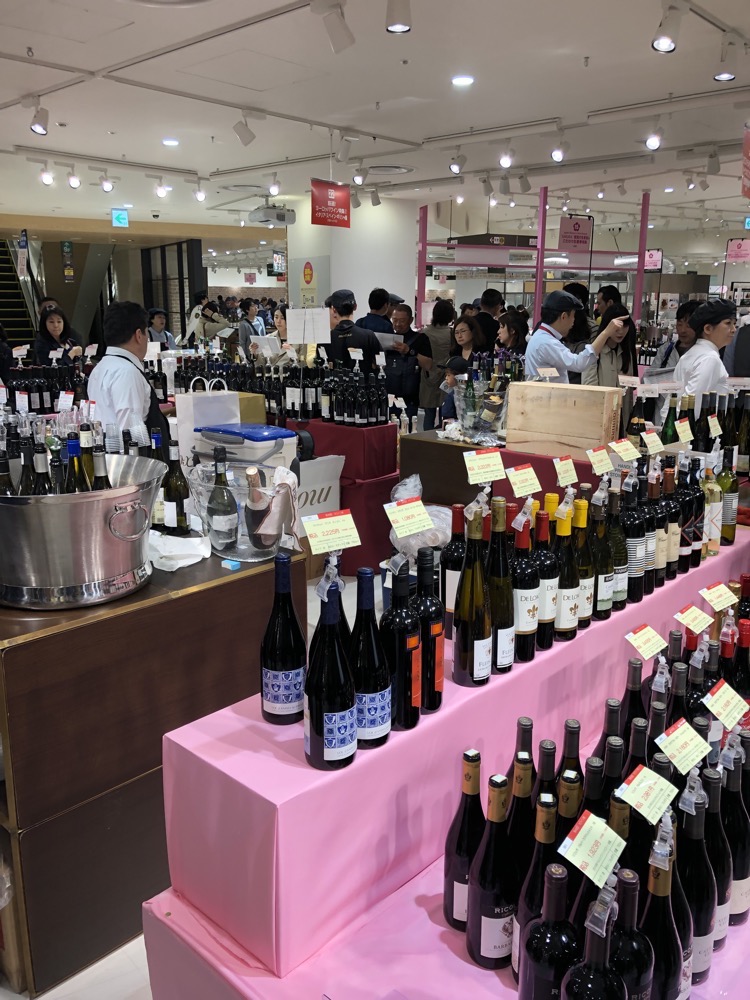
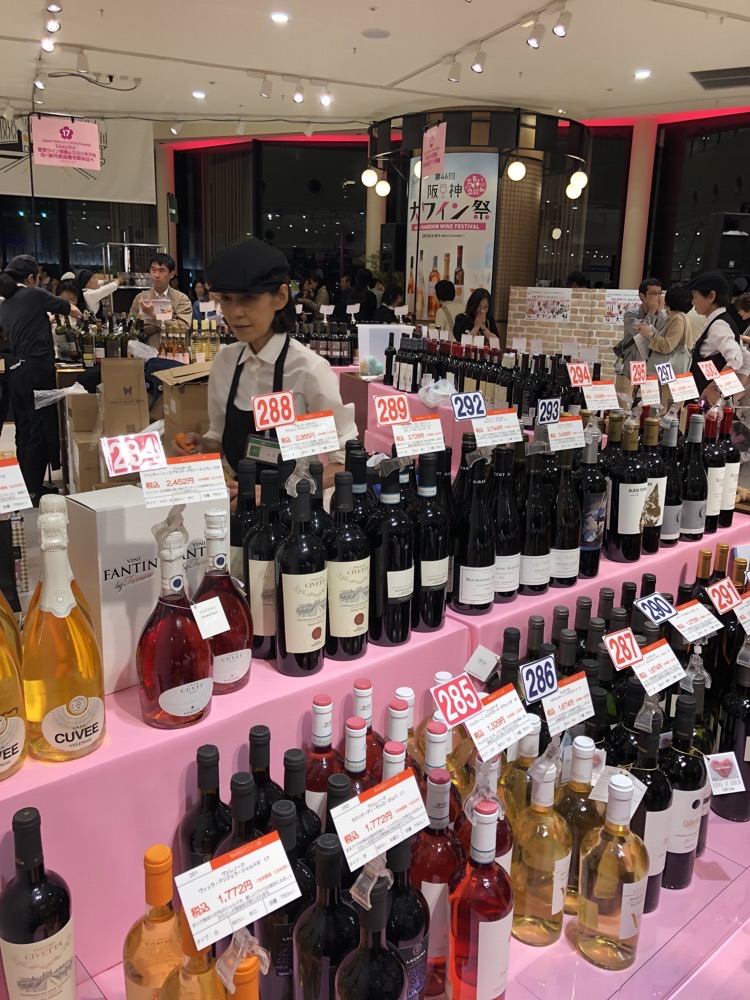 A couple of the vendors were asking me if I wanted to try any wines, but they rapidly gave up after hearing I was Australian… I have a feeling the event was designed for promotion, education and sales of international wines, and they probably assumed that flogging wine to travelling Australians might be a waste of time and effort.
A couple of the vendors were asking me if I wanted to try any wines, but they rapidly gave up after hearing I was Australian… I have a feeling the event was designed for promotion, education and sales of international wines, and they probably assumed that flogging wine to travelling Australians might be a waste of time and effort.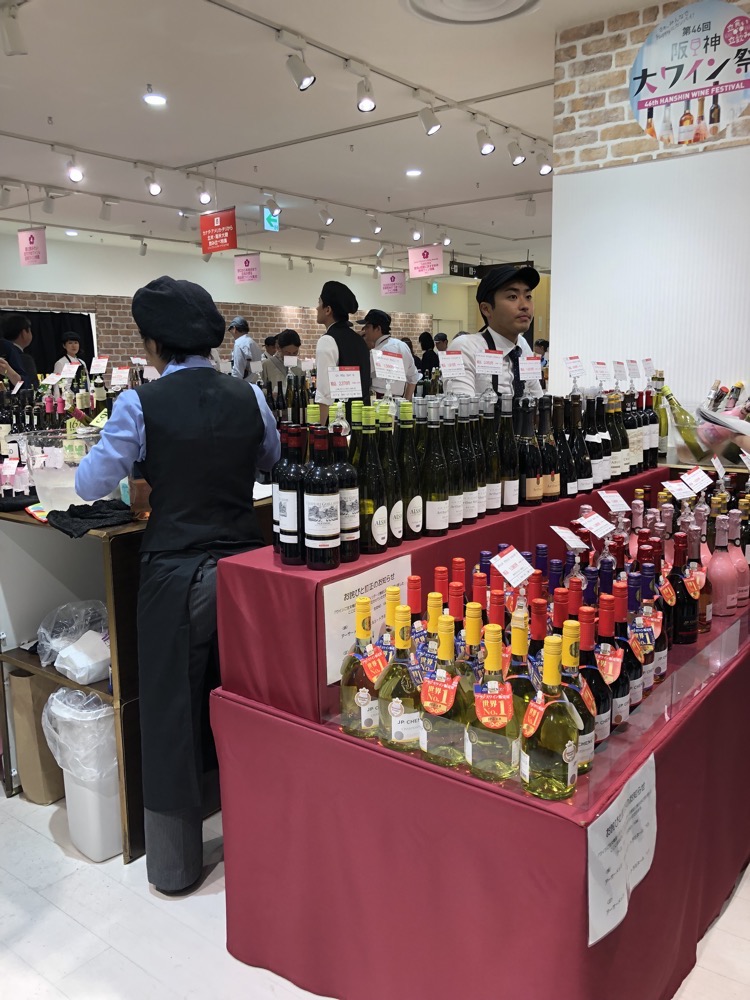 We eventually got back to our Hotel Samurai at about 9pm…? Ever such a long day and I was in soooo much pain. Thank you past me for the suite I booked came that complete with hot tub! So far, each evening has ended in a soak with sake. Tomorrow is another day – and likely one that won’t have an early start!
We eventually got back to our Hotel Samurai at about 9pm…? Ever such a long day and I was in soooo much pain. Thank you past me for the suite I booked came that complete with hot tub! So far, each evening has ended in a soak with sake. Tomorrow is another day – and likely one that won’t have an early start!